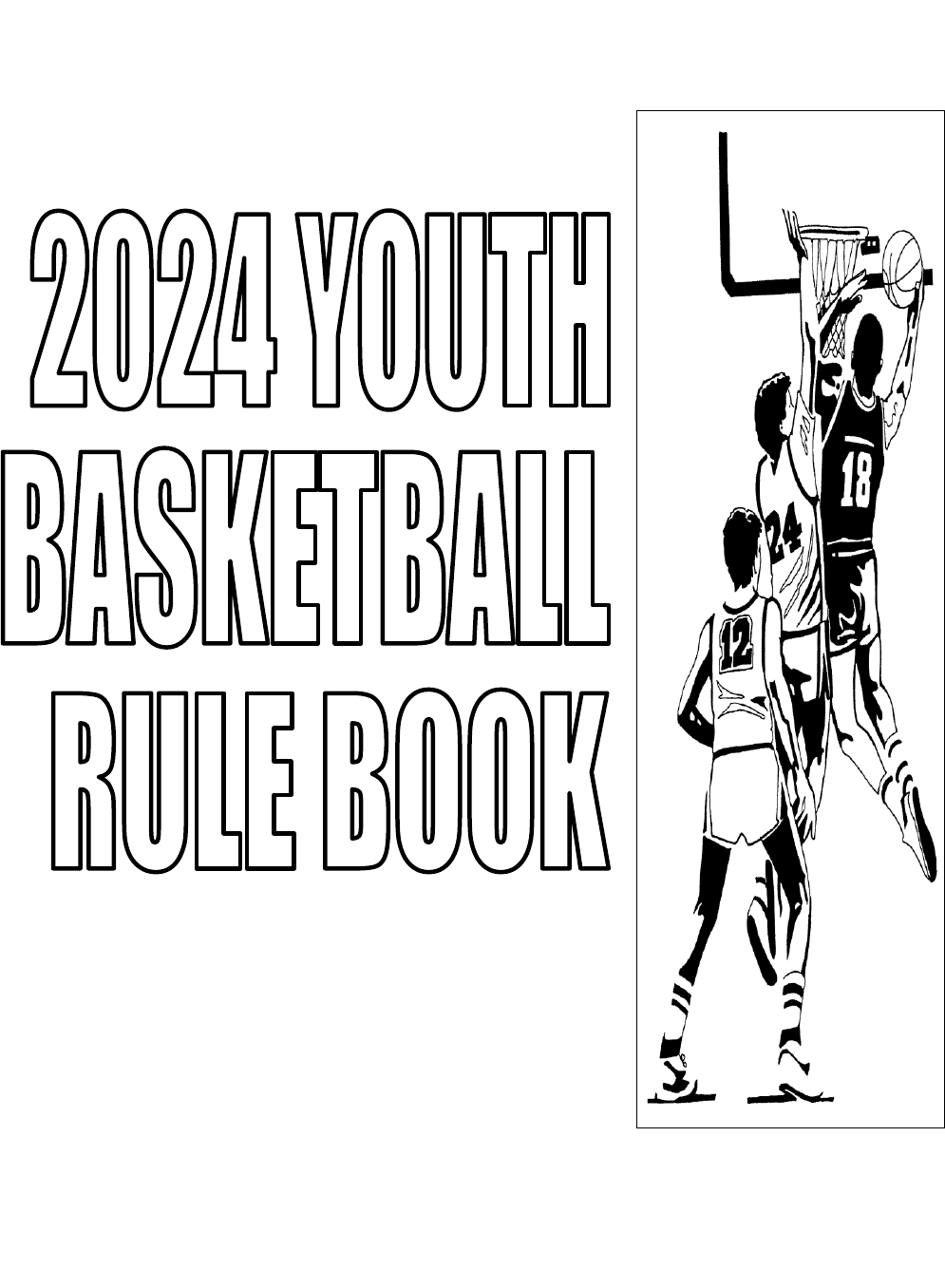
COMMUNITY SERVICES/RECREATION
DEPARTMENT
CITY OF CARSON
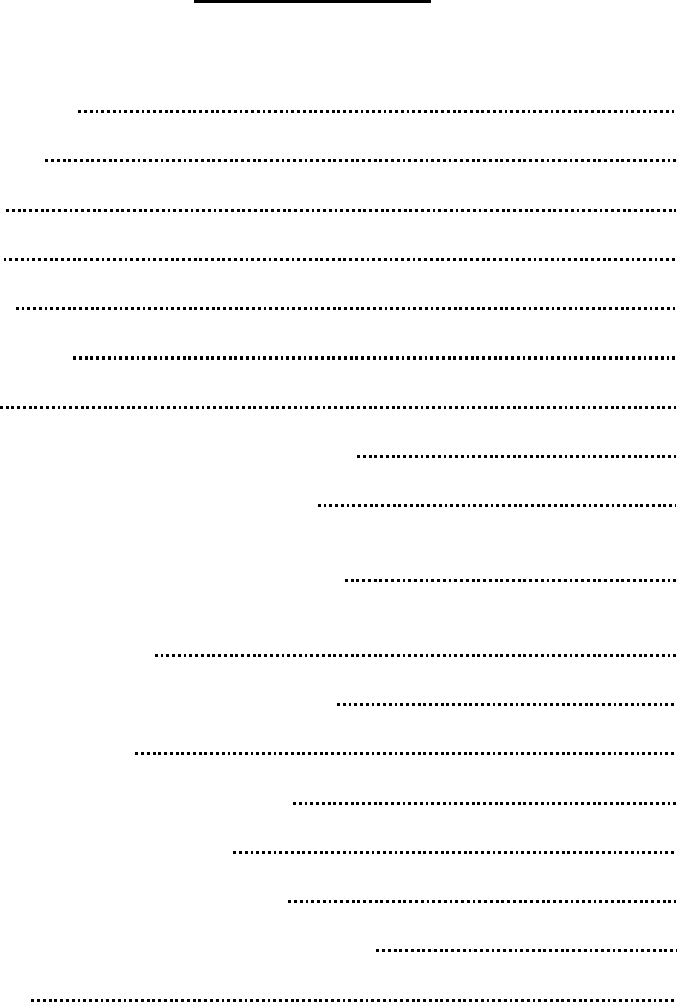
TABLE OF CONTENTS
1. CLASSIFICATIONS 1
2. REGISTRATION 1
3. ELIGIBILITY 1
4. PROTESTS 2
5. EQUIPMENT 3
6. PLAYER’S BENCH 3
7. TIE GAMES 3
8. RULE 1 - PLAYING TERMS AND DEFINITIONS 4
9. RULE 2 - PLAYERS AND SUBSTITUTIONS 13
10. RULE 3 - STARTING AND ENDING GAME, SCORING, QUARTERS,
STARTING AND STOPPING CLOCK 15
11. RULE 4 - LIVE BALL, ALTERNATING POSSESSION, JUMP BALL
AND DEAD BALL 17
12. RULE 5 – OUT OF BOUNDS AND THROW-IN 19
13. RULE 6 - FREE THROW 21
14. RULE 7 - VIOLATIONS AND PENALTIES 22
15. RULE 8 - FOULS AND PENALTIES 26
16. RULE 9 - SPECIAL 1A DIVISION RULES 31
17. CITY PLAY-OFFS AND CHAMPIONSHIP GAMES 31
18. CLINIC RULES 31

1
The following rules and regulations have been formulated and adopted by the Youth Sports Section for the
2024 Youth Basketball Season.
The Youth Sports Section will have jurisdiction over all rules and regulations governing any City of Carson
Youth Basketball event. For any Basketball rule herein not covered refer to the 2024 National Federation
of State High School Associations Rules Book for Basketball.
The Basketball Season (including playoffs) will be conducted from December 16, 2023 to February 24,
2024.
1. CLASSIFICATIONS / YEAR BORN
Clinic Sandlot – 2018 - 2019
Clinic Rookie – 2016 - 2017
BOYS GIRLS
1A
-
2014 - 2015
1A
-
2014 – 2015
2A
-
2012 - 2013
2A
-
2012 – 2013
3A
-
2010 - 2011
3A
-
2009, 2010, 2011
4A
-
2007, 2008, 2009
4A
-
2007 - 2008
2. REGISTRATION
All players must be listed on the Official Team Roster before taking part in a league game.
Registrants must present proof of birth date at the time of registration. An original Birth Certificate is
the only proof of birth accepted as verification of age.
3. ELIGIBILITY
A. A player may play for one (1) team and one (1) league only. A player is considered on a team
when his/her name is placed on the Official Team Roster, which is on file in the park office.
B. Once a player is dropped from a team he/she cannot be added to another team during that current
sport season at any park in the City of Carson unless he/she changes residence. A player may
never play for another team at the same park during the same sport season.
C. Youth participating in a sports league sanctioned by the California Interscholastic Federation (C.I.F.)
are ineligible to concurrently play for a City of Carson Community Services/Recreation Department
team while participating in the same sport (i.e., high school softball-girl’s softball, high school football-
flag football). If said youth has stopped playing on a C.I.F. team prior to tryouts for the department’s
league, he/she is eligible to go through the tryout and drafting procedure. If said youth has not stopped
playing on a C.I.F. team as of the tryout date, he/she will not be eligible to go through the tryout and
drafting procedure, but will become eligible to be added to a team from a waiting list once he/she has
stopped playing for the C.I.F. team and provided the department’s team qualifies for adding a player as
described in the Youth Coaches Manual under the heading “Waiting List”.
D. The use of any ineligible player(s) will result in the forfeiture of all games in which said player(s)
participated.
E. Falsification of any information on the player's ActiveNet Account may be grounds for forfeiture of
any or all games in which said player participated.
F. Per the Youth Coaches Manual teams may have a maximum of ten and a minimum of seven
rostered players.
G. There must be a minimum of four youngsters on the waiting list before assignments from the
waiting list can be made, except in an emergency situation (when team roster falls below the
minimum of seven players).
H. The dropping and adding of players will not be done at the coaches' whim. In order for a coach to drop
a player, the coach must fill out a Park Player Release Form and submit it to the Center Supervisor,
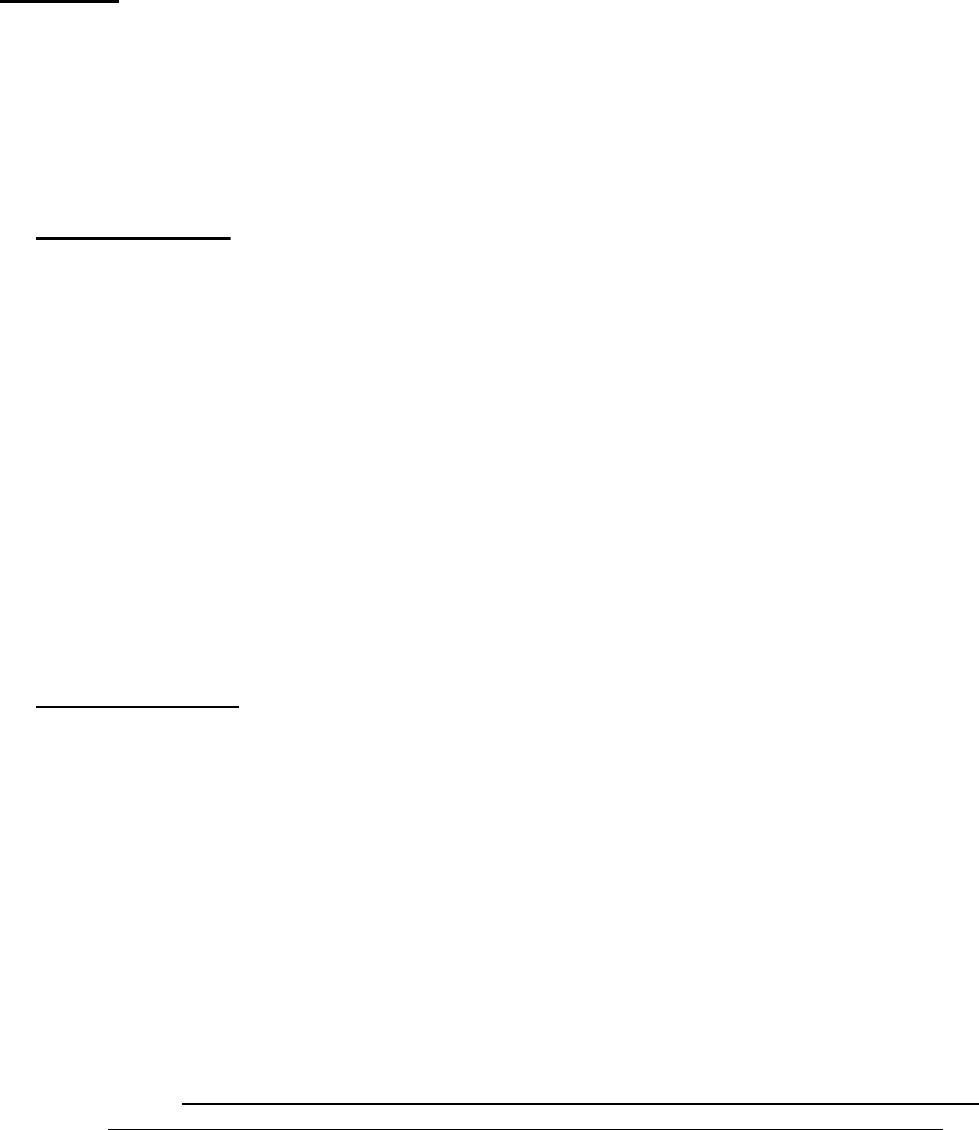
2
who will then call the player’s parent to verify the situation. If it is done properly and with good cause,
only then will the coach be able to acquire a youngster from the waiting list to replace the dropped
player. Once the drop has been confirmed the Center Supervisor may then assign a player or players
to the team as outlined in the Youth Coaches Manual under the heading “Waiting List”.
I. No new players can be added to a team following regular season play (prior to the City Play-offs). To
be eligible for the City Play-offs, a player must have participated in at least one regular season game.
J. A player that has been suspended shall have no contact with his/her team for the entire duration of
the game(s) in which he/she is suspended.
4. PROTESTS
A. PLAYER ELIGIBILITY:
1. Questions regarding the eligibility of a player(s) do not need to be made in protest form and
may be raised at any time by a coach.
2. Any coach questioning the eligibility of a player(s) shall notify the Youth Sports Section.
3. The Youth Sports Section will render a decision regarding a player(s) eligibility after all
pertinent information has been obtained and reviewed.
B. RULE INTERPRETATION:
1. Game officials may correct an error if a rule is inadvertently set aside and results in:
A. Failure to award a merited free throw.
B. Awarding an unmerited free throw.
C. Permitting a wrong player to attempt a free throw.
D. Attempting a free throw at the wrong basket.
E. Erroneously counting or canceling a score.
2. In order to correct any of the official’s errors listed above, such error must be recognized by an
official during the first dead ball after the clock has properly started.
3. Points scored, consumed time and additional activity, which may occur prior to the recognition
of an error, shall not be nullified. Errors because of free-throw attempts by the wrong player or
at the wrong basket shall be corrected by penalizing unsporting conduct by any player or
coach. If flagrant misconduct occurs the offender may be penalized and disqualified.
4. If an error is corrected, play shall be resumed from the point of interruption to rectify the error, unless it
involves awarding a merited free throw(s) and there has been no change of team possession since
the error was made, in which case play shall resume as after any free-throw attempt(s).
Protest Procedures
1. In order that a protest be proper and subject to a ruling by the Protest Committee, the following
list of requirements must be met:
A. Whenever a matter of protest arises during a game the coach of the team making the protest
must request a time-out, prior to the next live ball, and verbally notify the referee of the
protest. The referee will then notify the coach of the opposing team that the remainder of the
game will be conducted under protest. If the error is corrected in favor of the team requesting
the time-out, the time-out will not count against them. If the protest cannot be resolved at this
time the referee shall have the scorekeeper make a note on the score sheet reflecting the
rule being protested, the time remaining in the game, which quarter was being played, which
team had possession of the ball, and the score at the time of protest. A coach from both
teams shall initial the score sheet to verify that the recorded information is correct.
B. A protest shall be considered only if it is placed in writing on the Coaches Protest Report
Form and submitted to the Center Supervisor or one of his/her staff members along with a
$25.00 (cash or money order) protest fee within twenty-four hours of the game. The written
protest must contain the date, team name, division, time and location of the game. It must
also state the Rule #, Section or Article of the official rule(s) under which the protest is
Correctable Errors

3
being made, the decision made by the referee, and all other essential facts involved with
the matter being protested.
C. The Protest must involve the interpretation or application of a playing rule and not involve
the accuracy of the judgment of an official.
D. The head referee has the authority to rule on any point not specifically covered in this rulebook.
E. Highly technical protests or those, which could have little or no effect on subsequent play or
the final result of the game, shall not be considered.
F. When a protest for the misinterpretation of a playing rule is allowed, the game will be
replayed from the point at which the improper decision was made, with the decision
corrected. When a protest for ineligibility is allowed, all games the ineligible player
participated in shall be forfeited to the opponent of the offending team.
G. All protests shall be handled by the Youth Sports Section. All rulings will be made in writing
after receiving all the pertinent information needed to make a decision.
H. The use of video or other electronic devices will not be allowed as evidence in a protest, nor
shall it be used by a sports official in an attempt to render a decision.
I. Protests that do not contain all the necessary information to determine a ruling, or have
been found inconclusive by the protest committee, will be subject to a final ruling by the
Youth Sports Recreation Program Manager.
J. The protest fee will be refunded if a protest is decided in favor of the coach who submitted it.
5. EQUIPMENT
A. Game Equipment:
1. A synthetic leather ball in the following sizes will be used for all games:
A. All Girls Divisions will use an intermediate-size basketball.
B. Boys 1A and 2A Divisions will use an intermediate-size basketball.
C. Boys 3A and 4A Divisions will use an official-size basketball.
2. A timing devise (game clock) will be provided and operated by the scorekeeper.
B. Player Equipment:
1. A player shall wear:
A. Either basketball, tennis, cross-country or rubber soled multipurpose shoes. Hard-soled
street shoes will not be allowed.
B. Numbered Jerseys/shirts of the same color are required of each member on a participating
team in league play. Players must wear the same jersey number in each game played.
Dyed or non-dyed T-shirts with numbers are acceptable as jerseys
C. Shorts of any length.
2. Headbands (no wider than 2 inches) and sweatbands (no wider than 4 inches) of a single solid
color must be moisture-absorbing, non-abrasive and unadorned. If worn, the head band must
be worn on the forehead and the sweatband must be on the arm and below the elbow.
3. Rubber, cloth or elastic bands may be used to control hair. Hard items, including, but not
limited to, beads, barrettes and bobby pins or clips are prohibited.
4. A player shall not wear any type of jewelry while participating in a game. Religious and medical
alert medals are not considered jewelry. A religious medal must be taped and worn under the
uniform. A medical alert medal must be taped and may be visible.
6. PLAYER'S BENCH
Only rostered players and no more than two adult coaches will be allowed in the team/bench area. An
adult must be present on the bench at all times.
7. TIE GAMES
A. Regular season games, which end in a tie, will remain a tie. No extra periods will be played.
B. Play-off games which end in a tie will be completed in the following manner:
1. Play shall continue without a change of baskets for one or more extra periods with a one-
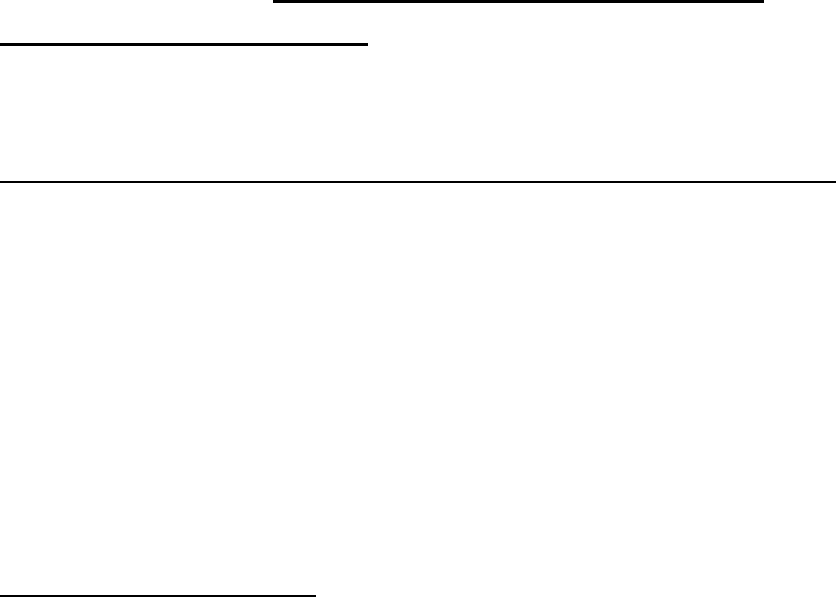
4
minute intermission before each extra period.
2. The game ends if, at the end of any extra period, the score is not tied.
3. Extra periods shall be two minutes in length and a regulation clock shall be used. As many
extra periods as are necessary to break the tie shall be played.
4. Each team is entitled to one additional time-out during each extra period.
NOTE: During play-off games any unused time-outs from the second half may be carried over into
the extra period.
RULE #1 - PLAYING TERMS AND DEFINITIONS
SECTION 1 - AIRBORNE SHOOTER
ART. 1... An airborne shooter is a player who has released the ball on a try for goal or has tapped the
ball and has not returned to the floor.
ART. 2... The airborne shooter is considered to be in the act of shooting.
SECTION 2 - ALTERNATING POSSESSION AND DIRECTION OF INITIAL ARROW
ART. 1... Alternating possession is the method of putting the ball in play by a throw-in as outlined in 4-2.
ART. 2... The possession arrow is a device located at the scorers’ table which is used to indicate the
direction of a team’s basket for the alternating-possession procedure.
ART. 3... Alternating-possession control is established, and the initial direction of the possession arrow is
set toward the opponent’s basket when:
A. A player secures control of the ball, as after the jump ball beginning the game.
B. The ball is placed at the disposal of the free thrower after a common foul when the bonus
free throw is in effect.
C. The ball is placed at the disposal of the thrower after:
1. A violation during or following the jump before a player secures control.
2. The free throws for a noncommon foul.
3. A common foul before the bonus free throw is in effect.
NOTE: This procedure is used only to establish the alternating-possession procedure.
SECTION 3 - BALL LOCATION
ART. 1... A ball which is in contact with a player or with the court is in the backcourt if either the ball or
the player (either player if the ball is touching more than one) is touching the backcourt.
ART. 2... A ball which is in contact with a player or with the court is in the frontcourt if neither the ball nor
the player is touching the backcourt.
ART. 3... A ball which is in flight retains the same location as when it was last in contact with a player or
the court.
ART. 4... A ball which touches a player or an official is the same as the ball touching the floor at that
individual’s location.
ART. 5... A ball which touches the front faces or edges of the backboard is treated the same as touching
the floor inbounds.
ART. 6... During a dribble from backcourt to frontcourt, the ball is in the frontcourt when the ball and both
feet of the dribbler touch the court entirely in the frontcourt.
ART. 7… A ball is at the disposal of a player when it is:
A. Handed to a thrower or free thrower.
B. Caught by a player after it is bounced to him/her.
C. Placed on the floor at the spot.
D. Available to a player after a goal and the official begins the throw-in count.
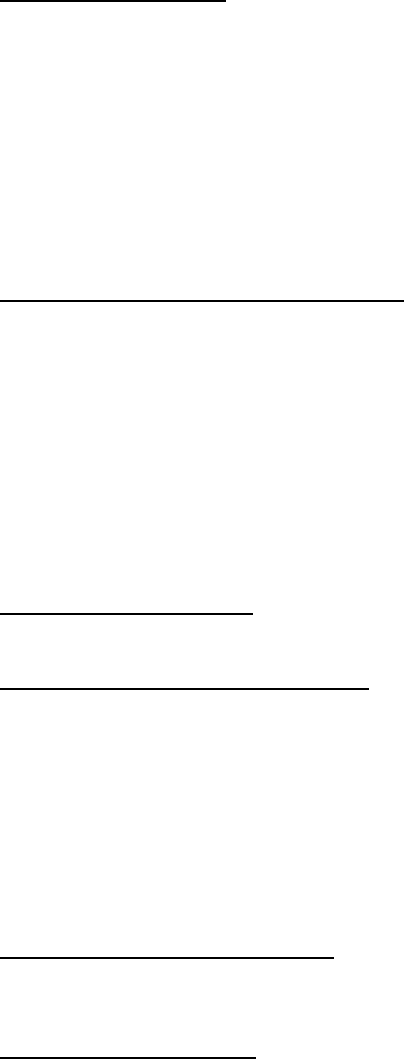
5
SECTION 4 - BASKET
ART. 1... The basket is the 18-inch ring, its flange and braces, and the appended net through which
players attempt to throw the ball.
ART. 2... A team's own basket is the one into which its players try to throw or tap the ball.
ART. 3... Each team’s basket for the first half must be the one farther from its team bench.
ART. 4... The teams must change baskets for the second half.
ART. 5... If by mistake the officials permit a team to go the wrong direction, when discovered all points
scored, fouls committed, and time consumed must count as if each team had gone the proper
direction. Play must resume with each team going the proper direction based on bench location.
SECTION 5 - BASKET INTERFERENCE
Basket interference occurs when a player:
ART. 1... Touches the ball or any part of the basket while the ball is on or within either basket.
ART. 2... Touches the ball while any part of the ball is within the imaginary cylinder which has the basket
ring as its lower base.
ART. 3... Touches the ball outside the cylinder while reaching through the basket from below.
EXCEPTION: In Articles 1 or 2, if a player has his/her hand legally in contact with the ball, it is
not a violation if such contact with the ball continues after it enters the
imaginary cylinder or if in such action, the player touches the basket. Dunking
or stuffing is legal and is not basket interference.
SECTION 6 - BLOCKING
Blocking is illegal personal contact, which impedes the progress of an opponent with or without the ball.
SECTION 7 - BONUS FREE THROW
ART. 1... A bonus free throw is the second free throw awarded for a common foul (except a player-
control or team-control foul) as follows:
A. Beginning with a team’s 7
th
foul in each half and for the eighth and ninth foul, the bonus is
awarded only if the first free throw is successful.
B. Beginning with a team’s 10
th
foul in each half the bonus is awarded whether or not the first
free throw is successful.
ART. 2... Player-control, team-control and technical fouls are counted as team fouls to reach the bonus.
When a technical foul is also charged indirectly to the head coach, it counts only as one team foul.
SECTION 8 - BOUNDARY LINES
Boundary lines of the court consist of end lines and sidelines. The inside edges of these lines define the
inbounds and out-of-bounds areas.
SECTION 9 - CHARGING
ART. 1... Charging is illegal personal contact caused by pushing or moving into an opponent’s torso.
A. A player who is moving with the ball is required to stop or change direction to avoid contact
if a defensive player has obtained a legal guarding position in his/her path.
B. If a guard has obtained a legal guarding position, the player with the ball must get his /her
head and shoulders past the torso of the defensive player. If contact occurs on the torso of
the defensive player, the dribbler is responsible for the contact.
C. There must be reasonable space between two defensive players or a defensive player and
a boundary line to allow the dribbler to continue in his/her path. If there is less than three
feet of space, the dribbler has the greater responsibility for the contact.
D. The player with the ball may not push the torso of the guard to gain an advantage to pass,
shoot or dribble.
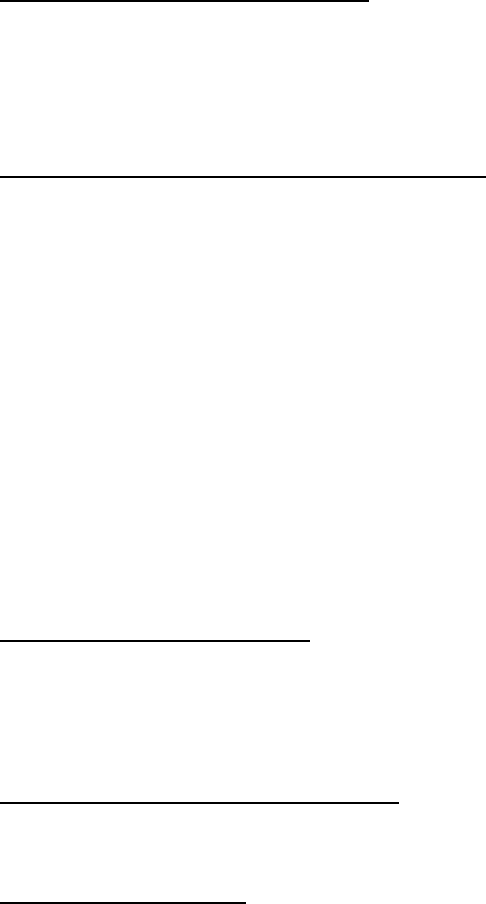
6
SECTION 10 - CLOSELY GUARDED
A closely-guarded situation occurs when a player in control of the ball in his/her team’s frontcourt, is
continuously guarded by any opponent who is within six feet of the player who is holding or dribbling the
ball. The distance must be measured from the forward foot/feet of the defender to the forward foot/feet of
the ball handler. A closely guarded count must be terminated when the offensive player in control of the
ball gets his/her head and shoulders past the defensive player.
SECTION 11 – CONTROL, PLAYER AND TEAM
ART. 1... A player is in control of the ball when he/she is holding or dribbling a live ball. There is no
player control when, during a jump ball, a jumper catches the ball prior to the ball touching the
floor or a non-jumper, or during an interrupted dribble.
ART. 2... A team is in control of the ball when a player of the team is in control; while a live ball is being
passed among teammates; during an interrupted dribble or when a player of the team has
disposal of the ball for a throw-in.
ART. 3... Team control continues until the ball is in flight during a try or tap for field goal; an opponent
secures control or the ball becomes dead.
ART. 4... While the ball remains live a loose ball always remains in control of the team whose player last
had control, unless it is a try or tap for goal.
ART. 5... Team control does not exist during a jump ball or the touching of a rebound, but is re-
established when a player secures control.
ART. 6... Neither team control nor player control exists during a dead ball, a jump ball or when the ball is
in flight during a try or tap for a field goal.
SECTION 12 - COURT AREAS
ART. 1... A team’s frontcourt consists of that part of the court between its end line and the nearer edge of
the division line, including its basket and the inbounds part of the backboard.
ART. 2... A team’s backcourt consists of the rest of the court, including the entire division line and the
opponent's basket and inbounds part of the opponent’s backboard.
SECTION 13 - DISQUALIFIED PLAYER
A disqualified player is one who is barred from further participation in the game because of having
committed his/her 5th foul (personal and technical), two technical fouls or a flagrant foul.
SECTION 14 - DRIBBLE
ART. 1... A dribble is ball movement caused by a player in control who bats (intentionally strikes the ball
with the hand(s)) or pushes the ball to the floor once or several times. It is not a part of a
dribble when the ball touches a player’s own backboard.
ART. 2... During a dribble the ball may be batted into the air provided it is permitted to strike the floor
before the ball is touched again with the hand(s).
ART. 3... The dribble begins by pushing, throwing, or batting the ball to the floor before the pivot foot is
lifted.
ART. 4... The dribble ends when:
A. The dribbler catches or causes the ball to come to rest in one or both hands.
B. The dribbler palms/carries the ball by allowing it to come to rest in one or both hands.
C. The dribbler simultaneously touches the ball with both hands.
D. The ball touches or is touched by an opponent and causes the dribbler to lose control.
E. The ball becomes dead.
NOTE: It is not possible for a player to travel during a dribble.
1. Ques. - Is a player dribbling while slapping the ball during a jump, when a pass rebounds
from his/her hand, when he/she fumbles, or when he/she bats a rebound or pass away from
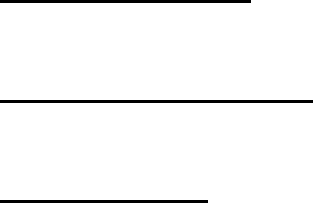
7
other players who are attempting to get it? Ans. - No. The player is not in control under
these conditions.
2. Ques. - Is it dribbling when a player stands still and: (a) bounces the ball; or (b) holds the
ball and touches it to the floor once or more than once? Ans. - (a) Yes. (b) No.
ART. 5... An interrupted dribble occurs when the ball is loose after deflecting off the dribbler or after it
momentarily gets away from the dribbler. There is no player control during an interrupted dribble.
ART. 6... During an interrupted dribble:
A. A closely guarded count must not be started or must be terminated.
B. A player control foul cannot be committed.
C. A time-out request must not be granted.
D. Out-of-bounds violation does not apply on the player involved in the interrupted dribble.
SECTION 15 - DUNKING
Dunking or stuffing is the driving, forcing, pushing, or attempting to force a ball through the basket with the
hand(s).
SECTION 16 - EXTRA PERIOD
An extra period is the extension of playing time necessary to break a tie score. During play-off games, the
length of each extra period is two minutes.
SECTION 17 - FOUL
A foul is an infraction of the rules which is charged and is penalized.
ART. 1... A personal foul is a player foul which involves illegal contact with an opponent while the ball is
live, which hinders an opponent from performing normal defensive and offensive movements. A
personal foul also includes contact by or on an airborne shooter when the ball is dead.
NOTE: Contact after the ball has become dead is ignored unless it is ruled intentional or
flagrant or is committed by or on an airborne shooter.
ART. 2... A common foul is a personal foul which is neither flagrant nor intentional nor committed against
a player trying or tapping for a field goal nor a part of a double, simultaneous or multiple foul.
ART. 3... An intentional foul is a personal or technical foul that may or may not be premeditated and is
not based solely on the severity of the act. Intentional fouls include, but are not limited to
contact that neutralizes an opponent’s obvious advantageous position; contact away from the
ball with an opponent who is clearly not involved with a play; contact that is not a legitimate
attempt to play the ball/player specifically designed to stop the clock or keep it from starting;
excessive contact with an opponent while the ball is live or until an airborne shooter returns to
the floor; contact with a thrower-in as in 7-2-10 Penalty 4.
ART. 4... A flagrant foul may be a personal or technical foul of a violent or excessive nature, or a
technical noncontact foul which displays unacceptable conduct. It may or may not be
intentional. If personal, it involves, but is not limited to violent contact such as: striking, kicking
and kneeing. If technical, it involves dead-ball contact or noncontact conduct at any time which
is extreme or persistent, vulgar or abusive conduct. Fighting is a flagrant act.
ART. 5... A technical foul is:
A. A foul by a nonplayer.
B. A noncontact foul by a player.
C. An intentional or flagrant contact foul while the ball is dead, except a foul by an airborne
shooter.
D. A direct technical, charged to the head coach because of his or her actions.
E. An indirect technical, charged to the head coach as a result of a bench technical foul being
assessed to team bench personnel.
ART. 6... A player-control foul is a common foul committed by a player while he/she is in control of the
ball or by an airborne shooter.
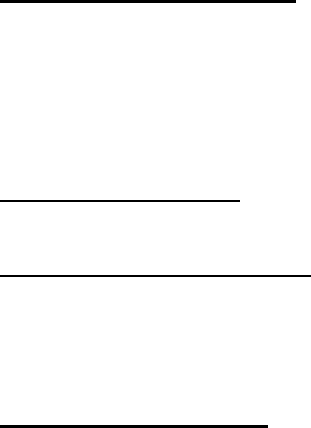
8
ART. 7... A team-control foul is a common foul committed by a member of the team that has team
control or by a member of the throw-in team from the start of the throw-in until player control is
obtained inbounds.
ART. 8... Double fouls:
A. A double personal foul is a situation in which two opponents commit personal fouls against
each other at approximately the same time.
B. A double technical foul is a situation in which two opponents commit technical fouls against
each other at approximately the same time.
ART. 9... A false double foul is a situation in which there are fouls by both teams, the second of which
occurs before the clock is started following the first, and such that at least one of the attributes
of a double foul is absent.
ART. 10... A simultaneous foul (personal or technical) by opponents is a situation in which there is a
foul by both teams which occurs at approximately the same time, but are not committed by
opponents against each other.
ART. 11... A multiple foul is a situation in which two or more teammates commit personal fouls against
the same opponent at approximately the same time.
ART. 12... A false multiple foul is a situation in which there are two or more fouls by the same team
and the last foul is committed before the clock is started following the first, and at least one of
the attributes of a multiple foul is absent.
ART. 13... A team foul is any personal foul or technical foul (except indirect technical fouls) which is
charged to either team. All team fouls are counted to reach the bonus free throw.
ART. 14... An unsporting foul is a noncontact technical foul which consists of unfair, unethical,
dishonorable conduct or any behavior not in accordance with the spirit of fair play. The use of
profane or inappropriate language or gestures is unsporting.
SECTION 18 - FREE THROW
ART. 1... A free throw is the opportunity given a player to score one point by an unhindered try for goal
from within the free-throw semicircle and behind the free-throw line.
ART. 2... The free throw starts when the ball is at the disposal of the free thrower.
ART. 3... The free throw ends when the try is successful, when it is certain the try will not be successful,
when the try touches the floor or any player, or when the ball becomes dead.
SECTION 19 - FUMBLE
A fumble is the accidental loss of player control when the ball unintentionally drops or slips from a player’s grasp.
SECTION 20 - GOALTENDING
Goaltending occurs when a player touches the ball during a try or tap for field goal while the ball is in its
downward flight entirely above the basket ring level, has the possibility of entering the basket in flight and
is not touching the basket cylinder or a player touches the ball outside the cylinder during a free-throw
attempt.
SECTION 21 - GUARDING
ART. 1... Guarding is the act of legally placing the body in the path of an offensive opponent. There is no
minimum distance required between the guard and opponent, but the maximum is six feet
when closely guarded. Every player is entitled to a spot on the playing court provided such
player gets there first without illegally contacting an opponent. A player who extends an arm,
shoulder, hip or leg into the path of an opponent is not considered to have a legal position if
contact occurs.
ART. 2... To obtain an initial legal guarding position:
A. The guard must have both feet touching the playing court.
B. The front of the guard’s torso must be facing the opponent.

9
ART. 3... After the initial legal guarding position is obtained:
A. The guard may have one or both feet on the playing court or be airborne, provided he/she
has inbound status.
B. The guard is not required to continue facing the opponent.
C. The guard may move laterally or obliquely to maintain position, provided it is not toward the
opponent when contact occurs.
D. The guard may raise hands or jump within his/her own vertical plane.
E. The guard may turn or duck to absorb the shock of imminent contact.
ART. 4... Guarding an opponent with the ball or a stationary opponent without the ball:
A. No time or distance is required to obtain an initial legal position.
B. If the opponent with the ball is airborne, the guard must have obtained legal position before
the opponent left the floor.
ART. 5... Guarding a moving opponent without the ball:
A. Time and distance are factors required to obtain an initial legal position.
B. The guard must give the opponent the time and/or distance to avoid contact.
C. The distance need not be more than two strides.
D. If the opponent is airborne, the guard must have obtained legal position before the
opponent left the floor.
SECTION 22 – HANDS AND ARMS, LEGAL AND ILLEGAL USE
ART. 1... It is legal to extend the arms vertically above the shoulders and need not be lowered to avoid
contact with an opponent when the action of the opponent causes contact. This legal use of the
arms and hands usually occurs when guarding the player making a throw-in, the player with the
ball in pressing tactics and a player with the ball who is maneuvering to try for goal by pivoting,
jumping, etc.
ART. 2... It is legal use of hands to reach to block or slap the ball controlled by a dribbler or a player
throwing for goal or a player holding it and accidentally hitting the hand of the opponent when it
is in contact with the ball.
ART. 3... It is legal to hold the hands and arms in front of the face or body for protection and to absorb
force from an imminent charge by an opponent. This same protective use of the arms and
hands occurs when a player who has set a screen outside the opponent’s visual field is about
to be run into by the player being screened. The action, however, should be a recoil action
rather than a pushing action.
ART. 4… It is not legal to use hands and arms or hips and shoulders to force his/her way through a
screen or to hold the screener and then to push him/her aside in order to maintain a guarding
position relative to his/her opponent.
ART. 5… It is not legal to use hands on an opponent which in any way inhibits the freedom of movement
of the opponent or acts as an aid to a player in starting or stopping.
ART. 6… It is not legal to extend the arms fully or partially in a position other than vertical so that the
freedom of movement of an opponent is hindered when contact with the arms occurs. The
extension of the elbows when the hands are on the hips or when the hands are held near the
chest or when the arms are held more or less horizontally are examples of the illegal positions
used.
ART. 7… It is not legal to use the hand and/or forearm to prevent an opponent from attacking the ball
during a dribble or when throwing for a goal.
ART. 8… It is not legal to swing arms and elbows excessively. This occurs when:
A. Arms and elbows are swung about while using the shoulders as pivots, and the speed of
the extended arms and elbows is in excess of the rest of the body as it rotates on the hips
or on the pivot foot.
B. The aggressiveness with which the arms and elbows are swung could cause injury to
another player if contacted.
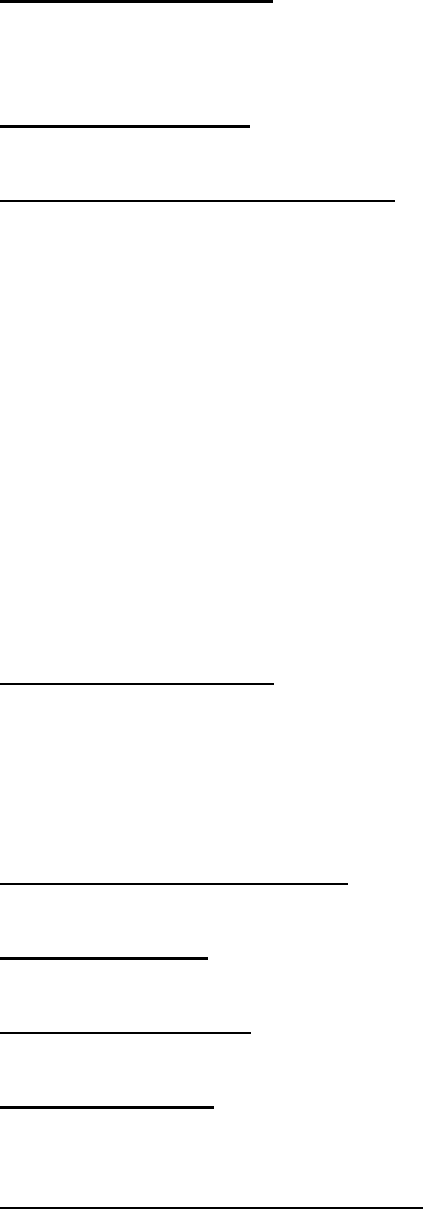
10
Using this description as a basis, an official will promptly and unhesitatingly rule such action
with arms and elbows a violation.
ART. 9… It is not legal to lock arms or grasp a teammate(s) in an effort to restrict the movement of an
opponent.
SECTION 23 - HELD BALL
A held ball occurs when opponents have their hands so firmly on the ball that control cannot be obtained
without undue roughness and when an opponent places his/her hand(s) on the ball and prevents an
airborne player from throwing the ball or releasing it on a try or tap for field goal.
SECTION 24 - HOLDING
Holding is illegal personal contact with an opponent which interferes with his/her freedom of movement.
SECTION 25 - INCIDENTAL CONTACT
Contact with an opponent which is permitted and which does not constitute a foul.
ART. 1... The mere fact that contact occurs does not constitute a foul. When 10 players are moving
rapidly in a limited area, some contact is certain to occur.
ART. 2... Contact, which may result when opponents are in equally favorable positions to perform normal
defensive or offensive movements, should not be considered illegal, even though the contact
may be severe.
ART. 3... Similarly, contact which does not hinder the opponent from participating in normal defensive or
offensive movements should be considered incidental.
ART. 4... A player who is screened within his/her visual field is expected to avoid contact with the
screener by stopping or going around the screener. In cases of screens outside the visual field,
the opponent may make inadvertent contact with the screener, and such contact is to be ruled
incidental contact, provided the screener is not displaced if he/she has the ball.
ART. 5... If, however, a player approaches an opponent from behind or from a position from which
he/she has no reasonable chance to play the ball without making contact with the opponent,
the responsibly is on the player in the unfavorable position.
SECTION 26 - JUMP BALL
ART. 1... A jump ball is a method of putting the ball into play to start the game and each extra period by
tossing it up between two opponents in the center restraining circle.
ART. 2... In all other jump-ball situations the teams will alternate taking the ball out-of-bounds for a throw-in.
ART. 3... The jump ball begins when the ball leaves the referee's hand(s) and ends when the touched
ball contacts a nonjumper, an official or the floor.
SECTION 27 - MULTIPLE THROW
A multiple throw is a succession of free throws attempted by the same team.
SECTION 28 - PASS
A pass is movement of the ball caused by a player who throws, bats or rolls the ball to another player.
SECTION 29 - PENALTY
A penalty is an action assessed by an official to a player or team for a rule infraction.
SECTION 30 - PIVOT
A pivot takes place when a player who is holding the ball steps once, or more than once, in any direction
with the same foot while the other foot, called the pivot foot, is kept at its point of contact with the floor.
SECTION 31 - PLAYERS / SUBSTITUTES
ART. 1... A player is one of five team members who are legally on the court at any given time.

11
ART. 2... A substitute becomes a player when he/she legally enters the court. If entry is not legal, the
substitute becomes a player when the ball becomes live. A player becomes bench personnel
after his or her substitute becomes a player or after notification of the coach following his/her
disqualification.
SECTION 32 - PLAYER LOCATION
ART. 1... The location of a player or nonplayer is determined by where the player is touching the floor as
far as being:
A. Inbounds or out-of-bounds.
B. In the frontcourt or backcourt.
C. Outside (behind/beyond) or inside the 3-point line.
ART. 2... The location of an airborne player with reference to the three factors of Article 1 is the same as
at the time such player was last in contact with the floor or an extension of the floor, such as a
bleacher.
SECTION 33 – PRESS RULE
ART. 1... 1A Division teams ahead by twenty (20) points or more at any point in the second half must
play defense behind their three-point arc. First offense: Warning; Second and all additional
offenses: 2 shot administrative technical.
ART. 2... 2A-4A Division teams ahead by thirty (30) points or more at any point in the second half must
play defense behind their three-point arc. First offense: Warning; Second and all additional
offenses: 2 shot administrative technical.
SECTION 34 – POINT OF INTERRUPTION
ART. 1... Method of resuming play due to an official’s inadvertent whistle, an interrupted game, a
correctable error, a double personal, double technical or simultaneous foul.
ART. 2... Play must be resumed by one of the following methods:
A. A throw-in to the team that was in control at a spot nearest to where the ball was located
when the interruption occurred.
B. A free throw or a throw-in when the interruption occurred during this activity or if a team is
entitled to such.
C. A jump ball or alternating-possession throw-in when neither team is in control and no goal,
infraction, nor end of quarter/extra period is involved when the game is interrupted.
SECTION 35 – REBOUNDING
ART. 1... Rebounding is an attempt by any player to secure possession of the ball following a try or tap
for field goal. In a rebounding situation there is no player or team control.
ART. 2... To obtain or maintain legal rebounding position, a player may not:
A. Displace, charge or push an opponent.
B. Extend shoulders, hips, knees or extend the arms or elbows fully or partially in a position
other than vertical so that the freedom of movement of an opponent is hindered when
contact with the arms or elbows occurs.
C. Bend his/her body in an abnormal position to hold or displace an opponent.
D. Violate the principle of verticality.
ART. 3... Every player is entitled to a spot on the playing court, provided the player gets there first
without illegally contacting an opponent.
SECTION 36 – RESUMPTION-OF-PLAY PROCEDURE
The resumption-of-play procedure is used to prevent delay in putting the ball in play when a throw-in team
does not make a thrower available or following a time-out or intermission (unless either team is not on the
court to start the second half). The procedure results in a violation instead of a technical foul for initial
delay in specific situations.

12
SECTION 37 - RULE
ART. 1... A rule is one of a group of regulations, which governs the game.
ART. 2... A game regulation, commonly called a rule, sometimes states or implies that the ball is dead or
a foul or violation is involved. If it does not, it is assumed the ball is live and no foul or violation
has occurred to affect the situation.
ART. 3... A single infraction is not complicated by a second infraction unless so stated or implied.
SECTION 38 - SCREEN
ART. 1... A screen is legal action by a player who, while touching the playing court, without causing
contact, delays or prevents an opponent from reaching a desired position.
ART. 2... To establish a legal screening position:
A. The screener may face any direction.
B. Time and distance are relevant.
C. The screener must be stationary, except when both are moving in the same path and the
same direction.
D. The screener must stay within his/her vertical plane with a stance approximately shoulder
width apart.
ART. 3... When screening a stationary opponent from the front or side (within the visual field), the
screener may be anywhere short of contact.
ART. 4… When screening a stationary opponent from behind (outside the visual field) the screener must
allow the opponent one normal step backward without contact.
ART. 5… When screening a moving opponent, the screener must allow the opponent time and distance
to avoid contact by stopping or changing direction. The speed of the player to be screened will
determine where the screener may take his/her stationary position. The position will vary and
may be one to two normal steps or strides from the opponent.
ART. 6… When screening an opponent who is moving in the same path and direction as the screener,
the player behind is responsible if contact is made because the player in front slows up or
stops, and the player behind overruns his/her opponent.
ART. 7... A player who is screened within his/her visual field is expected to avoid contact by going
around the screener. In cases of screens outside the visual field, the opponent may make
inadvertent contact with the screener and if the opponent is running rapidly, the contact may be
severe. Such a case is to be ruled as incidental contact provided the opponent stops or
attempts to stop on contact and moves around the screen, and provided the screener is not
displaced if he/she has the ball.
ART. 8... A player may not use the arms, hands, hips or shoulders to force his/her way through a screen
or to hold the screener and then push the screener aside in order to maintain a guarding
position on an opponent.
SECTION 39 - THROW-IN
ART. 1... A throw-in is a method of putting the ball in play from out of bounds.
ART. 2... The throw-in and the throw-in count begin when the ball is at the disposal of a player of the
team entitled to it.
ART. 3... The throw-in count ends when the ball is released by the thrower so the passed ball goes
directly into the court.
ART. 4... The throw-in ends when the passed ball touches or is legally touched by another player
inbounds; the passed ball touches or is touched by another player out of bounds or the throw-in
team commits a throw-in violation.
SECTION 40 - TIME-OUT
ART. 1... A time-out charged to a team shall not exceed one minute.
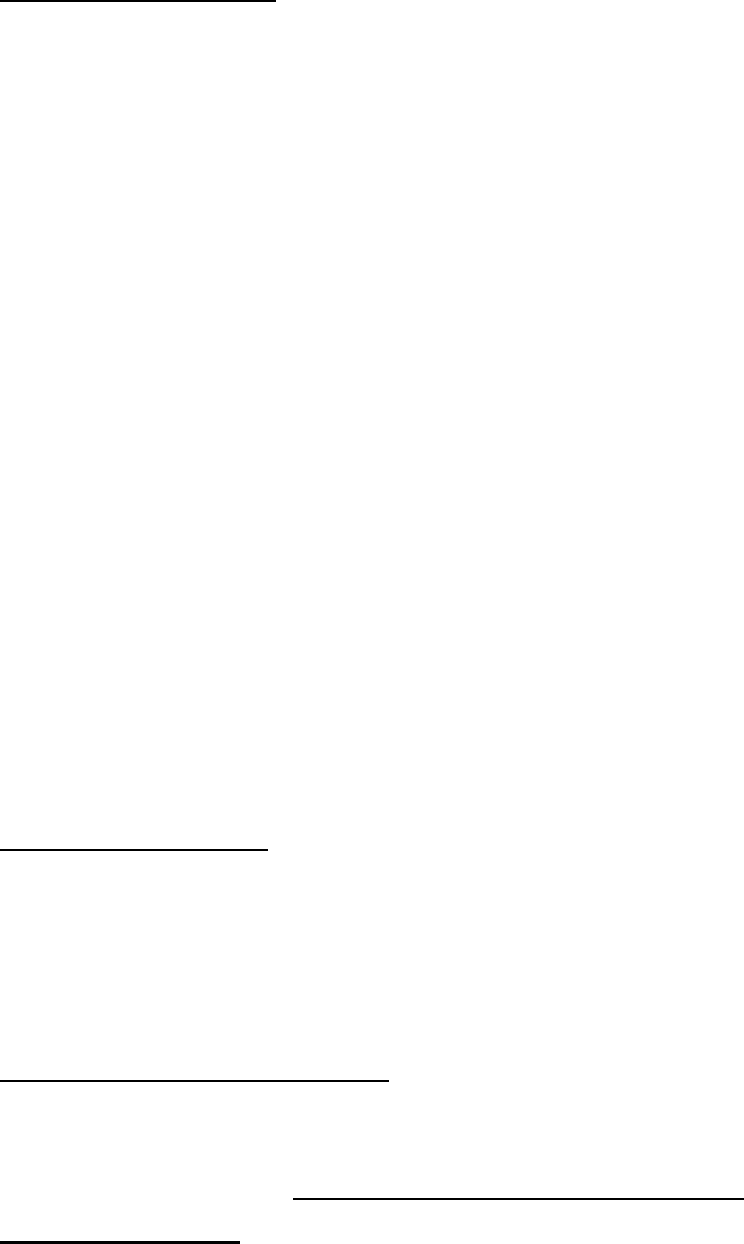
13
ART. 2... A successive time-out is one which is granted to either team before the clock has started
following the previous time-out.
SECTION 41 - TRAVELING
Traveling (running with the ball) is moving a foot or feet in any direction in excess of prescribed limits while
holding the ball. The limits on foot movements are as follows:
ART. 1... A player who catches the ball with both feet on the floor, may pivot, using either foot. When one
foot is lifted, the other is the pivot foot.
ART. 2... A player, who catches the ball while moving or dribbling, may stop, and establish a pivot foot as
follows:
A. If both feet are off the floor and the player lands:
1. Simultaneously on both feet, either foot may be the pivot.
2. On one foot followed by the other, the first foot to touch is the pivot.
3. On one foot, the player may jump off that foot and simultaneously land on both. Neither
foot can be a pivot in this case.
B. If one foot is on the floor:
1. It is a pivot when the other foot touches in a step.
2. The player may jump off that foot and simultaneously land on both. Neither foot can be
a pivot in this case.
ART. 3... After coming to a stop and establishing a pivot foot:
A. The pivot foot may be lifted, but not returned to the floor, before the ball is released on a
pass or try for goal.
B. If the player jumps, neither foot may be returned to the floor before the ball is released on a
pass or try for goal.
C. The pivot foot may not be lifted before the ball is released, to start a dribble.
ART. 4... After coming to a stop when neither foot can be a pivot:
A. One or both feet may be lifted but may not be returned to the floor before the ball is
released on a pass or try for goal.
B. Neither foot may be lifted before the ball is released, to start a dribble.
ART. 5... A player holding the ball:
A. May not touch the floor with a knee or any other part of the body other than hand or foot.
B. After gaining control while on the floor and touching with other than hand or foot, may not
attempt to get up or stand.
SECTION 42 - VIOLATION
A violation is one of three types of rule infractions. The types of violations are:
ART. 1... Type 1: Floor violations including basket interference by a teammate of the player attempting
a field goal or free throw or goaltending a field goal and other violations, which are not
connected with a free throw or try or tap for field goal.
ART. 2... Type 2: Basket interference or goaltending by a player at the opponent’s basket.
ART. 3... Type 3: Free-throw violations other than those involving basket interference or goaltending.
SECTION 43 - WARNING FOR DELAY
A warning to a team for delay is an administrative procedure by an official which is recorded on the score
sheet and reported to the coach.
RULE #2 - PLAYERS AND SUBSTITUTIONS
SECTION 1 - PLAYERS
ART. 1... Each team consists of five players, one of whom is the captain. The captain is the
representative of his or her team and may address an official on matters of rule interpretation or

14
to obtain essential information if it is done in a courteous manner. Any player may address an
official to request a time-out or permission to leave the court.
ART. 2... At least ten minutes before the scheduled starting time, each coach must supply the
scorekeeper with the line-up for his or her team. The line-up shall include the first, last name
and jersey number of each player and designate the five starting players.
ART. 3... A player is disqualified on his or her 5th personal foul or on his or her 2nd technical foul.
ART. 4... A coach may choose to have a player continue playing after his or her 5th personal foul
provided there are no remaining eligible players. A player that remains in the game will be
assessed a technical foul for his/her 5th personal foul. If any additional fouls are committed by
said player, the offended team will be awarded, in addition to any free throws as a result of the
foul, two free throws and the ball out-of-bounds at midcourt.
NOTE: This does not apply to ejected players.
SECTION 2 - SUBSTITUTIONS
Coaches will be responsible for the enforcement of all articles within this rule, regardless of the
circumstances.
ART. 1... When present, each team member in good standing must play in each game a minimum of one
complete quarter (ten minutes).
ART. 2... Any combination of minutes adding up to ten within two or more quarters does not constitute
the playing of one complete quarter. A player must report to the scorekeeper at the beginning
of a quarter and play the entire quarter (from beginning to end) to satisfy the minimum
participation requirement.
NOTE: It is the responsibility of the manager or coach, not the referee or scorekeeper, to
ensure that all players present play their minimum required playing time.
ART. 3... Substitutions will not be allowed during the first quarter, with the exception of replacing an
injured player. After completion of the first quarter, any player may be substituted for, within
said game.
ART. 4... Players arriving late (within the first three quarters) must still play one complete quarter to meet
the minimum participation requirement and can only enter the game at the beginning of the
next quarter. Players arriving after the fourth quarter has begun will not be allowed to play.
ART. 5... If a player is injured prior to having played the minimum required playing time, the referee must
be notified prior to a substitute replacement. A player that has not yet played must replace the
injured player. If all players have played, the manager can designate any player to replace the
injured player.
ART. 6... An injured player who has been withdrawn and who has been unable to complete the required
playing time, constitutes a legal player and may re-enter as a substitute at the discretion of the
referee.
ART. 7... A participant that has been disqualified and is therefore unable to complete the minimum
required playing time, will not be penalized for not having played one complete quarter.
ART. 8... A substitute who desires to enter must report to the scorer, giving his/her number and the
number of the player who is being replaced.
A. Substitutions between halves may be made by the substitute or a team representative.
B. During multiple free-throw personal fouls, substitutions may be made only before the final
attempt in the sequence and after the final attempt has been converted.
C. If entry is at any time other than between quarters, and a substitute who is entitled and
ready to enter reports to the scorer, the scorer shall use a sounding device, if, or as soon as
the ball is dead and the clock is stopped.
ART. 9... The substitute must remain outside the boundary until an official beckons, whereupon he/she
shall enter immediately. If the ball is about to become live, the beckoning signal should be
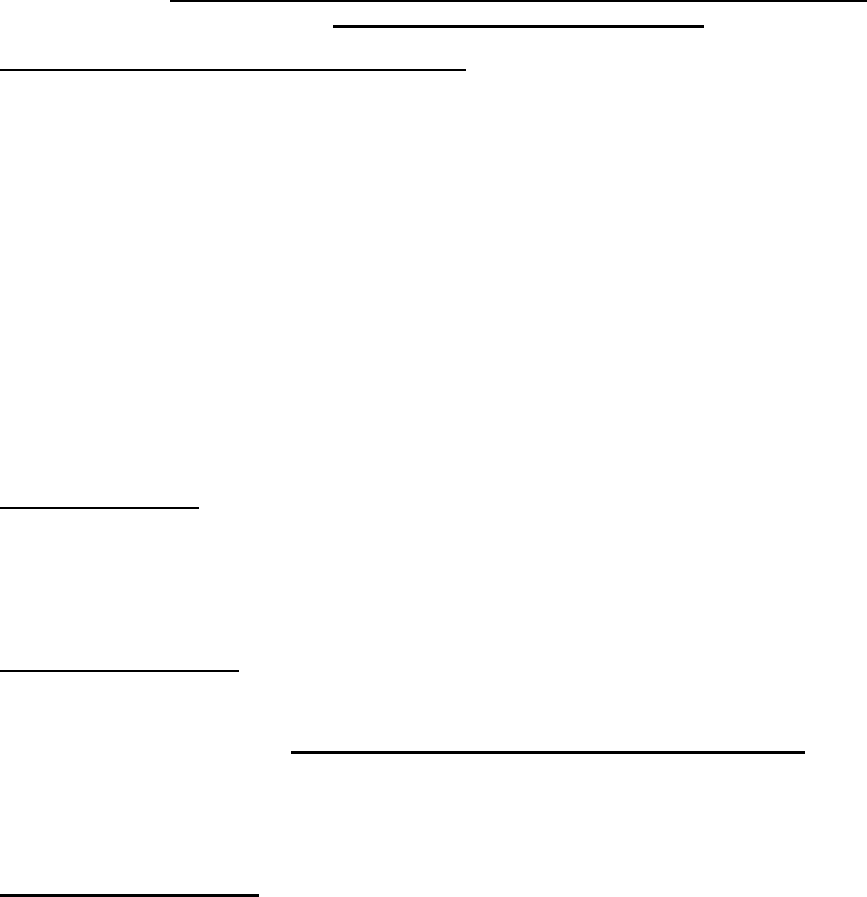
15
withheld. The entering substitute must not replace a designated jumper or a free thrower. If the
substitute enters to replace a player who must jump or attempt a free throw, he/she must
withdraw until the next opportunity to substitute.
ART. 10... A player who has been withdrawn shall not re-enter before the next opportunity to substitute
after the clock has been properly started following his/her replacement.
ART. 11... Officials shall not tolerate substitutions, which are obviously made to delay the game.
PENALTY: (ART. 1 & 2), Forfeiture of game, if protested properly. (ART. 9), Technical foul - two free
throws.
NOTE: If, in the opinion of the referee, any team member or coach has employed tactics designed to gain
an advantage, the referee may declare the game a forfeit against the offending team.
RULE #3 - STARTING AND ENDING GAME, SCORING, QUARTERS,
STARTING AND STOPPING CLOCK
SECTION 1 - STARTING AND ENDING GAME
ART. 1... GAME TIME IS FORFEIT TIME. Game time will be strictly enforced.
ART. 2... Teams failing to arrive by their scheduled game time, field minimum players, or violating any
other rule penalized by forfeit will be so penalized. Team coaches to benefit from said forfeit
may not waive forfeit under any circumstances.
ART. 3... A team not having four players on the court ready to play at game time will forfeit the
game. Game time is the scheduled game time or time designated by the referee.
ART. 4... To start the game and each extra period, the ball shall be put in play in the center circle by a
jump ball between any two opponents.
ART. 5... To start the 2nd, 3rd, and 4th quarters, the ball shall be put in play by a throw-in under the
alternating-possession procedure.
ART. 6... A Center Supervisor is solely responsible for determining whether or not a game will be started or
continued. An official may start/stop a game in the Center Supervisor’s absence due to conditions
that may exist, which may cause injury to players or makes the court unplayable.
SECTION 2 - GOAL
ART. 1... A goal is made when a live ball enters the basket from above and remains in or passes
through. No goal is scored if an untouched throw-in goes through the basket.
ART. 2... Whether the clock is running or stopped has no influence on the counting of a goal. If a player-
control foul occurs before or after a goal, the goal is canceled.
SECTION 3 - SCORING
ART. 1... A goal from the field by a player counts two points for the team into whose basket the ball is
thrown. A goal from the field by a player who is located behind the team’s own three-point arc will
count three points. A three-point play will be in effect for all divisions.
ART. 2... A goal from a free throw counts one point for the free-thrower's team and is credited to the free
thrower.
ART. 3... Regular season games ending in a tie will remain a tie. No extra periods will be played to break a tie.
SECTION 4 - QUARTERS
ART. 1... There shall be four, ten-minute quarters in a game.
ART. 2... There shall be a one-minute rest period after the first and third quarters. There shall be a five-
minute half-time after the second quarter.
ART. 3... A quarter may be shortened in an emergency or at any time at the direction of the Youth Sports
Coordinator, supervising gym staff or by mutual agreement of the opposing coaches and the referee.
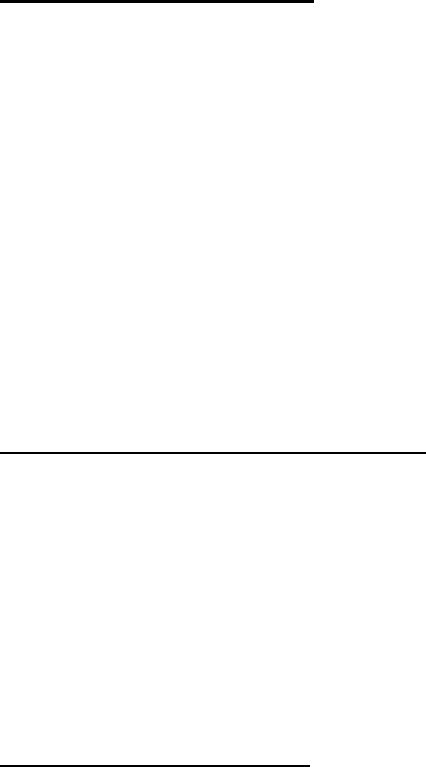
16
ART. 4... Each quarter or extra period begins when the ball first becomes live. It ends when the signal
sounds indicating time has expired, except that:
A. If the ball is in flight during a try or tap for field goal, the quarter or extra period ends when
the try or tap ends.
B. If a held ball or violation occurs so near the expiration of time that the clock is not stopped
before time expires, the quarter or extra period ends with the held ball or violation.
C. If a foul occurs so near the expiration of time that the scorekeeper cannot get the clock
stopped before the time expires or after time expires, but while the ball is in flight during a
try or tap for field goal. The quarter or extra period ends when the free throw(s) and all
related activity have been completed. No penalty or part of a penalty carries over from one
quarter or extra period to the next. No free throw(s) must be attempted after time has
expired for the fourth quarter or any extra period unless the point(s) would affect the
outcome of the game.
D. If a technical foul occurs after the ball has become dead to end a quarter or extra period,
the next quarter or extra period is started by administering the free throws. This applies
when the foul occurs after any quarter has ended, including the fourth quarter, provided
there is to be an extra period. If there is no way to determine whether there will be an extra
period until the free throws are administered, the free throws are attempted immediately, as
if the foul had been part of the preceding quarter.
SECTION 5 - STOPPING PLAY
ART. 1... The clock operated by the scorekeeper shall be the official timepiece.
ART. 2... The clock shall run continuously, except for time outs and emergencies, until the last two
minutes of the 4th quarter. At the two-minute mark a regulation clock shall be used if the
margin of difference in score is ten points or less.
NOTE: If the point differential is eleven points or more at the two-minute mark, the clock shall
run continuously for the remainder of the game regardless if the point differential falls
below eleven points. If the point spread is ten points or less at the two-minute mark,
the clock will stop on all whistles for the remainder of the game.
ART. 3... During the game, the clock shall be stopped when an official stops play:
1. Because of an injury.
2. To confer with the scorekeeper.
3. Because of unusual delay in getting a dead ball live.
4. For an emergency.
NOTE: The clock will not be stopped for fouls or on turnovers unless specified in Article 2 above.
SECTION 6 – RE-STARTING THE CLOCK
ART. 1... After time has been out, the clock must be started when the official signals time-in. If the official
neglects to signal, the scorekeeper is authorized to start the clock as per rule, unless an official
specifically signals continued time-out.
ART. 2... If play is started or resumed by a jump ball, the clock must be started when the tossed ball is
legally touched.
ART. 3... If a free throw is not successful and the ball is to remain live, the clock must be started when
the ball touches or is touched by a player on the court.
ART. 4... If play is resumed by a throw-in, the clock shall be started when the ball touches, or is touched
by, a player on the court after it is released by the thrower.
SECTION 7 – TIMER ERRORS
ART. 1... If an obvious error by the timer has occurred because of the failure to start or stop the clock at the
proper moment, the referee may correct the error only when he/she has definite information
relative to the time involved. The exact time observed by the official may be placed on the clock.
ART. 2... If the referee determines that the clock was not started or stopped properly or if the clock did

17
not run, an official’s count or other official information can be used to make a correction.
SECTION 8 – TIME-OUT
ART. 1... Each team is entitled to two time-outs per half during a regulation game. Each team is entitled
to one additional time-out during each overtime period. Only the head coach or a player on the
court may request a time-out.
NOTE: Any unused time-outs from the second half may be carried over to an overtime period,
in play-off games only.
ART. 2... A single time-out charged to a team must not exceed one minute in length.
ART. 3... Time-outs in excess of the allotted number may be requested and shall be granted during
playing time or any extra period at the expense of a technical foul for each.
ART. 4... Successive time-outs must not be granted after expiration of playing time for the 4th quarter or
any extra period.
ART. 5... A time-out must not be granted until after the ball has become live to start the game.
ART. 6... Failure of a team to play within two minutes after being ordered to do so by the referee may
result in forfeiture of the game.
RULE #4 - LIVE BALL, ALTERNATING POSSESSION, JUMP BALL AND DEAD BALL
SECTION 1 - LIVE BALL
ART. 1... The game and each extra period must be started by a jump ball in the center circle. After any
subsequent dead ball, play shall resume by a jump ball in the center circle, by a throw-in or by
a free throw.
ART. 2... The ball becomes live when:
A. On a jump ball, the tossed ball leaves the referee’s hand(s).
B. On a throw-in, it is at the disposal of the thrower.
C. On a free throw, it is at the disposal of the free thrower.
SECTION 2 - ALTERNATING POSSESSION
ART. 1... In all jump ball situations other than the start of the game and each extra period, the teams will
alternate taking the ball out of bounds for a throw-in. The team obtaining control from the jump
ball establishes the alternating possession procedure and the arrow is set toward the
opponent’s basket. Control may also be established by the results of a violation or foul.
ART. 2... To start the 2nd, 3rd, and 4th quarters, the throw-in must be from out of bounds at the division
line opposite the scorers’ table.
ART. 3... Alternating-possession throw-ins must be from the out-of-bounds spot nearest to where the ball
was located. An alternating-possession throw-in shall result when:
A. A held ball occurs.
B. The ball goes out-of-bounds.
C. Simultaneous floor or free-throw violations occur.
D. A live ball lodges between the backboard and ring or comes to rest on the flange, unless a
free throw or throw-in follows.
E. Opponents commit simultaneous basket-interference violations.
F. The point of interruption cannot be determined.
NOTE: When the alternating-possession procedure has not been established, the jump ball
shall be in the center restraining circle between the two players involved in the
previous action.
ART. 4... The direction of the possession arrow is reversed immediately after an alternating-possession
throw-in ends. An alternating-possession throw-in ends when the throw-in ends.
ART. 5... The opportunity to make an alternating-possession throw-in is lost if the throw-in team violates.
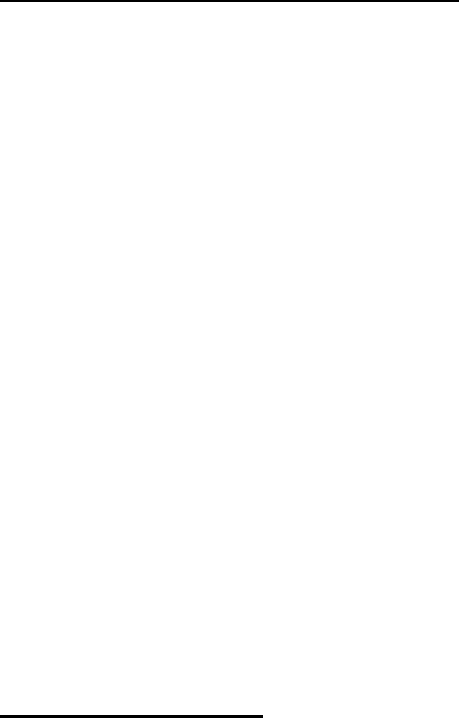
18
If either team fouls during an alternating-possession throw-in, it does not cause the throw-in
team to lose the possession arrow. If an opponent commits a violation during the throw-in, the
possession arrow is not switched.
SECTION 3 - JUMP BALL ADMINISTRATION
ART. 1... For any jump ball, each jumper must have both feet within that half of the center restraining
circle, which is farther from the jumper’s basket.
ART. 2... When the referee is ready and until the ball is tossed, nonjumpers shall not:
A. Move onto the center restraining circle.
B. Change position around the center restraining circle.
ART. 3... Teammates may not occupy adjacent positions around the center restraining circle if an opponent
indicates a desire for one of these positions before the referee is ready to toss the ball.
ART. 4... The referee shall then toss the ball upward between the jumpers in a plane at right angles to
the sidelines. The toss must be to a height greater than either of them can jump so that it will
drop between them.
ART. 5... Until the tossed ball is touched by one or both jumpers, nonjumpers shall not:
A. Have either foot break the plane of the center restraining circle cylinder.
B. Take a position in any occupied space.
ART. 6... The tossed ball must be touched by one or both of the jumpers after it reaches its highest point.
If the ball contacts the floor without being touched by at least one of the jumpers, the referee
must toss it again.
ART. 7... Neither jumper shall:
A. Touch the tossed ball before it reaches its highest point.
B. Leave the center circle until the ball has been touched.
C. Catch the jump ball.
D. Touch the ball more than twice.
ART. 8… The jump ball and the restrictions in article 7 above end when the touched ball contacts one of
the eight nonjumpers, an official or the floor.
SECTION 4 - DEAD BALL
The ball becomes dead, or remains dead, when:
ART. 1... A goal is made.
ART. 2... It is apparent the free throw will not be successful on a:
A. Free throw which is to be followed by another free throw.
B. Free throw which is to be followed by a throw-in.
ART. 3... A held ball occurs, or the ball lodges between the backboard and ring or comes to rest on the
flange.
ART. 4... A player-control or team-control foul occurs.
ART. 5... An official's whistle is blown (see exceptions A & B below).
ART. 6... Time expires for a quarter or extra period (see exception A below).
ART. 7... A foul, other than player-control or team-control, occurs (see exceptions A, B & C below).
ART. 8... A free throw violation by the throwing team occurs.
ART. 9... A violation occurs (see exception D below).
EXCEPTION: The ball does not become dead until the try or tap for field goal ends, or until the
airborne shooter returns to the floor when:
A. Articles 5, 6, or 7 occurs while a try or tap for a field goal is in flight.
B. Article 5 or 7 occurs while a try for a free throw is in flight.
C. Article 7 occurs by any opponent of a player who has started a try or tap for field goal (is in
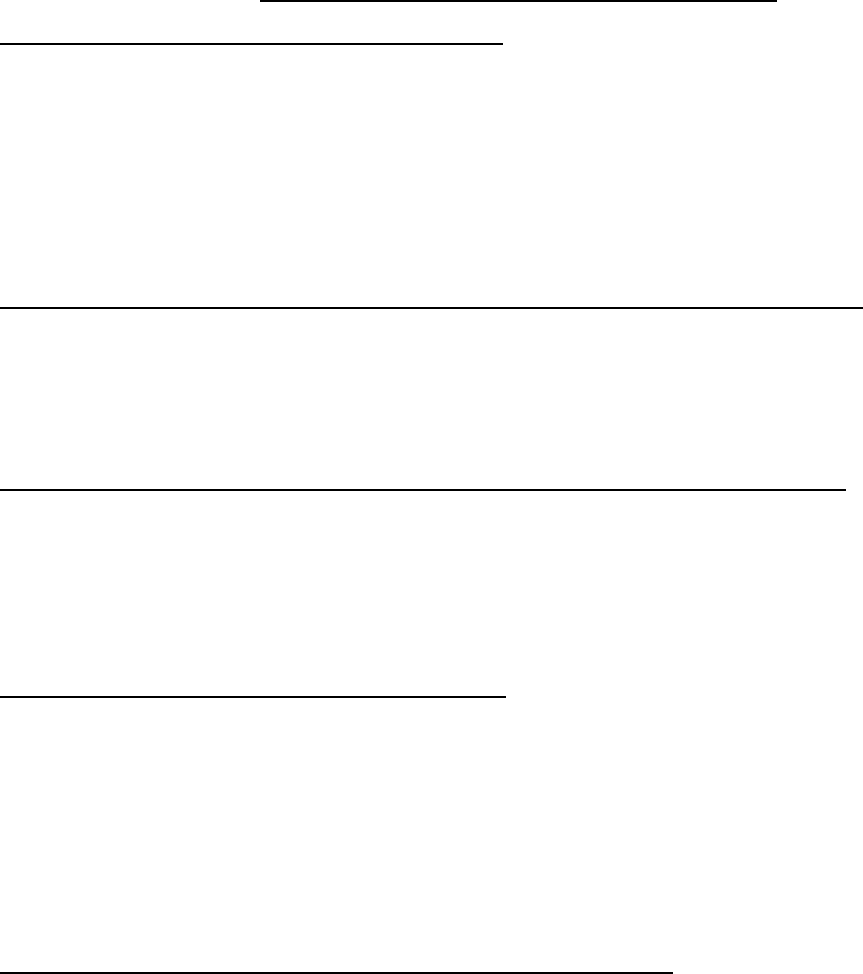
19
the act of shooting) before the foul occurred, provided time did not expire before the ball
was in flight. The trying motion must be continuous and begins after the ball comes to rest
in the player's hand(s) on a try or touches the hand(s) on a tap, and is completed when the
ball is clearly in flight. The trying motion may include arm, foot or body movements used by
the player when throwing the ball at his/her basket.
D. Article 9 occurs by an opponent.
NOTE: If A1’s try or tap for field goal is legally touched in flight, the goal counts if made, if the
period ends before or after the legal touching. If the touching is interference or
goaltending by A, no points are scored. If B violates, the points are awarded.
RULE #5 - OUT OF BOUNDS AND THE THROW-IN
SECTION 1 - OUT-OF-BOUNDS - PLAYER, BALL
ART. 1... A player is out of bounds when he/she touches the floor, or any object other than a
player/person, on or outside a boundary.
ART. 2... The ball is out of bounds when it touches or is touched by:
A. A player who is out of bounds.
B. Any other person, the floor, or any object on or outside a boundary.
C. The supports or back of the backboard.
D. The ceiling, overhead equipment or supports.
NOTE: The ball is also out of bounds if it passes over the rectangular backboard.
SECTION 2 - CAUSING THE BALL TO GO OUT-OF-BOUNDS - INDIVIDUAL PLAYER
ART. 1... The ball is caused to go out of bounds by the last player in bounds to touch it or be touched by
it, unless the ball touches a player who is out of bounds prior to touching something out of
bounds other than a player.
ART. 2... If the ball is out of bounds because of touching or being touched by a player who is on or
outside a boundary line, such player causes it to go out.
SECTION 3 - CAUSING THE BALL TO GO OUT-OF-BOUNDS - SIMULTANEOUSLY
ART. 1... If the ball goes out of bounds and was last touched simultaneously by two opponents, both of
whom are inbounds or out of bounds, or if the official is in doubt as to who last touched the ball or
if the officials disagree, play must be resumed by the team entitled to the alternating-possession
throw-in at the spot out of bounds nearest to where the simultaneous violation occurred.
ART. 2... If the alternating-possession procedure has not been established, play must be resumed by a
jump ball between the two players involved in the center restraining circle.
SECTION 4 - BALL AWARDED OUT OF BOUNDS
ART. 1... The ball is awarded out of bounds after:
A. A violation.
B. A free throw for a technical foul, or a flagrant or intentional personal foul.
C. A field goal or a successful free throw for any other personal foul or an awarded goal.
D. The ball becomes dead while a team is in control, provided no infraction or the end of a
period is involved.
E. A player-control or team control foul.
F. A common foul before the bonus rule is in effect.
G. A held ball after the alternating-possession procedure has been established.
SECTION 5 - RESUMPTION-OF-PLAY PROCEDURE, THROW-INS
ART. 1... When a team does not make a thrower available, after a time-out or the intermission between
any quarter, the resumption-of-play procedure is used to prevent delay. The administering
official will sound the whistle to indicate play will resume. In each situation:
A. The ball must be put in play if Team A is ready or it must be placed on the floor.
B. The throw-in count must begin and if a violation occurs, the procedure will be repeated for

20
Team B.
C. Following a violation by one team only, if that team continues to delay when authorized to
make a throw-in, it is a technical foul.
D. Following a violation by both teams, any further delay by either team is a technical foul.
ART. 2... Designated out-of-bounds spot throw-in nearest the violation:
A. After any violation, the official must place the ball at the disposal of an opponent of the
player who committed the violation.
B. After goaltending or basket interference by the offensive team,
C. After a free-throw violation by the throwing team, provided there are no additional free-
throws to be awarded, any opponent of throwing team must make the throw-in.
ART. 3... Designated out-of-bounds spot throw-in nearest to where the ball became dead:
A. Any player of the team in control must make the throw-in.
B. After a double personal foul, a double technical foul, or a simultaneous foul, play must be
resumed from the point of interruption.
ART. 4... Designated out-of-bounds spot throw-in nearest the foul:
A. After a player-control foul, a team-control foul, or after a common foul prior to the bonus rule
being in effect, any player of the offended team must make the throw-in.
B. After an intentional foul or a flagrant personal foul, any player from the team to whom the
free throws have been awarded must make the throw-in.
ART. 5... Designated out-of-bounds spot throw-in behind the backboard must be made from the nearer
free-throw lane line extended.
ART. 6... Designated out-of-bounds spot throw-in at the division line opposite the scorer's table:
A. After a technical foul any player of the team to whom the free throws have been awarded
must make the throw-in.
B. An alternating-possession throw-in to start the second, third and fourth quarters. Any player
from the team with the possession arrow must make the throw-in.
ART. 7... A throw-in anywhere along the end line after a goal or an awarded goal for basket interference or
goaltending by a defensive player, the team not credited with the score must make a throw-in
from the end of the court where the goal was made and from any point outside the end line.
A. Any player of the team may make a direct throw-in or he/she may pass the ball along the
end line to a teammate(s) outside the boundary.
B. A team retains this privilege if the scoring team commits a violation or common foul (before
the throw-in ends and before the bonus is in effect) and the ensuing throw-in spot would
have been on the end line.
SECTION 6 - THROW-IN ADMINISTRATION
ART. 1... The official must hand or bounce the ball to the thrower for a throw-in unless the throw-in is
from outside an end line following a successful goal.
ART. 2... The throw-in begins when the ball is at the disposal of a player of the team entitled to the
throw-in. The thrower must release the ball on a pass directly into the court, within five seconds
after the throw-in begins. The throw-in pass must touch another player (inbounds or out of
bounds) on the court before going out of bounds untouched. The throw-in pass shall not touch
a teammate while it is on the out-of-bounds side of the throw-in boundary plane.
ART. 3... The thrower must not leave the designated throw-in spot until the ball has been released on a
throw-in pass.
ART. 4... The opponent(s) of the thrower must not have any part of his/her person through the inbounds
side of the throw-in boundary plane until the ball has been released on a throw-in pass.
ART. 5... Teammates must not occupy adjacent positions which are parallel to and within 3 feet of the
boundary line if an opponent desires one of the positions. The 3-foot restraining line is
sometimes the temporary boundary line.
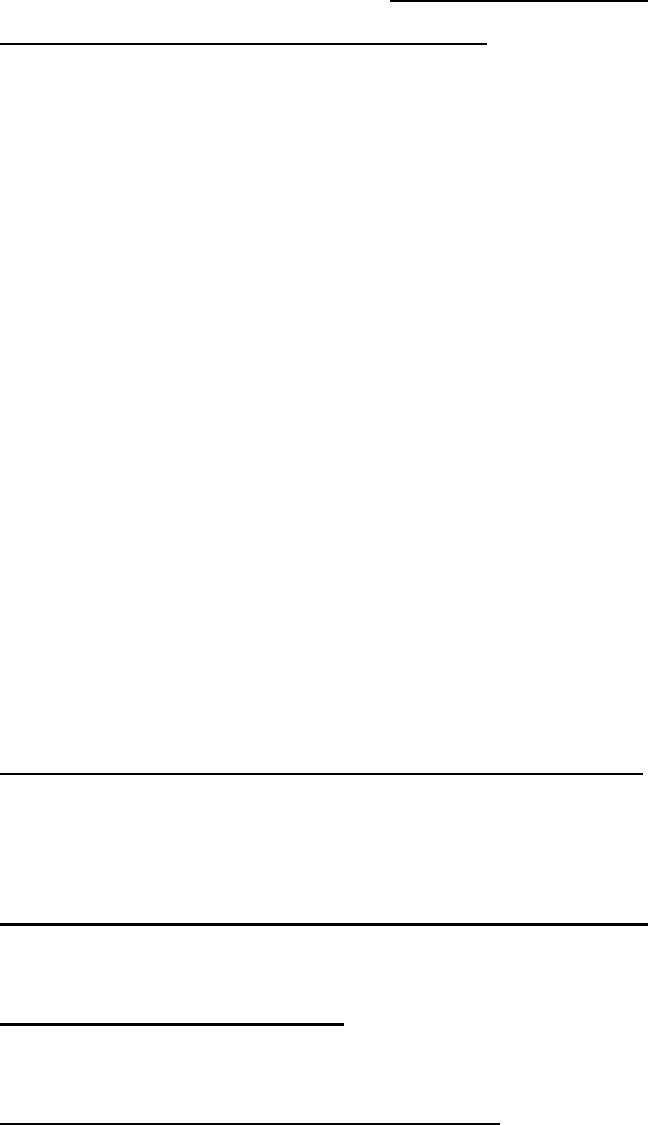
21
ART. 6... When an official administers a throw-in to the wrong team, the mistake must be rectified before
the throw-in ends.
RULE #6 - FREE THROW
SECTION 1 – FREE-THROW ADMINISTRATION
ART. 1... When a free throw is awarded, the ball must be placed at the disposal of the free thrower
(bounced) by the administering official and the free throw count must begin. Either or both
teams may be charged with a violation.
ART. 2... Following a time out or intermission, the resumption-of-play procedure may be used to prevent
delay. An official will sound a whistle to indicate play will resume. The ball must be place at the
disposal of the thrower or placed on the floor at the free-throw line and the count must begin.
Either or both teams may be charged with a violation. Following a violation by one or both
teams, if the offending team(s) continues to delay, a team technical foul must be called.
ART. 3... If the ball is to become dead when the last free throw for a specific penalty is not successful,
players must not occupy any spaces along the free-throw lane lines.
ART. 4... During a free throw, lane spaces may be occupied as follows:
A. Marked lane spaces may be occupied by a maximum of four defensive and two offensive
players.
B. The first marked lane spaces on each side of the lane, above and adjacent to the first lane-
space marks, must be occupied by opponents of the free thrower. No teammate of the free
thrower must occupy either of these marked lane spaces.
C. The second marked lane spaces on each side may be occupied by teammates of the free
thrower.
D. The third marked lane spaces on each side, nearest the free thrower, may be occupied by
the opponents of the free thrower.
E. Players must be permitted to move along and across the lane to occupy a vacant marked
lane space within the limitations listed in this rule.
F. Not more than one player may occupy any part of a marked lane space.
ART. 5... Any player, other then the free thrower, who does not occupy a marked lane space must be
behind the free-throw line extended and behind the 3-point line.
SECTION 2 - ATTEMPTING PERSONAL-FOUL FREE THROWS
The free throw(s) awarded because of a personal foul must be attempted by the offended player. If such
player must withdraw because of an injury or disqualification, his/her substitute must attempt the throw(s)
unless no substitute is available, in which case any teammate may attempt the throw(s) as selected by the
head coach.
SECTION 3 - ATTEMPTING TECHNICAL-FOUL FREE THROWS
The free throws awarded because of a technical foul may be attempted by any player of the offended team,
including an eligible substitute or designated starter. The coach or captain must designate the free thrower(s).
SECTION 4 - TEN SECOND LIMIT
The try for goal must be made within ten seconds after the ball has been placed at the disposal of the free
thrower at the free-throw line. This must apply to each free throw.
SECTION 5 - RESUMING PLAY WITH THROW-IN
After a free throw which is not followed by another free throw, the ball must be put in play by a throw-in:
ART. 1... As after a field goal, if the try is for a personal foul other than intentional or flagrant, and is
successful.
ART. 2... By any player of the free-thrower's team from out of bounds at the division line on the side
opposite the scorers’ table if the free throw is for a technical foul.
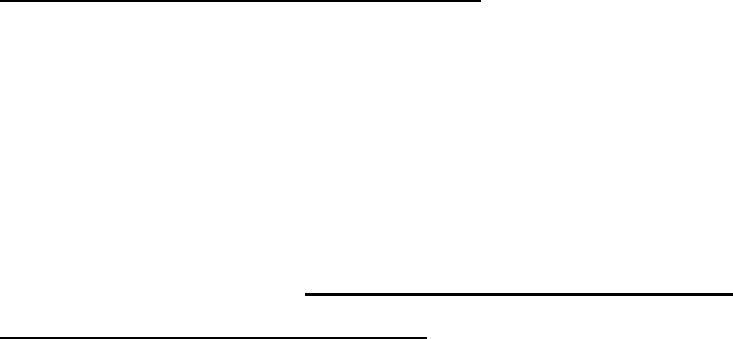
22
ART. 3... By any player of the free-thrower's team from the out-of-bounds spot nearest the foul if the free
throw is for an intentional personal foul or flagrant personal foul.
SECTION 6 - RESUMING PLAY DIFFERENCES
ART. 1... If a free throw for a personal foul, other than intentional or flagrant, is unsuccessful, or if there is a
multiple throw for a personal foul(s) and the last free throw is unsuccessful, the ball remains live.
ART. 2... If there is a multiple throw and both a single personal and single technical foul are involved, the tries
must be attempted in the order in which the related fouls occurred, and if the last try is for a single
technical foul, or intentional or flagrant personal foul, the ball must be put in play by a throw-in.
ART. 3... If a false double foul involves any type of single foul and any type of double or simultaneous
foul, play is resumed with the penalty for only the single foul, as if the double or simultaneous
foul had not occurred.
RULE #7 - VIOLATIONS AND PENALTIES
SECTION 1 - FREE THROW PROVISIONS
ART. 1... The try must be attempted from within the free-throw semicircle and behind the free-throw line.
ART. 2... Teams must properly occupy marked lane spaces according to number and space
requirements as in 6-1-4.
ART. 3... After the ball is placed at the disposal of a free thrower:
A. He/she must throw within 10 seconds to cause the ball to enter the basket or touch the ring
before the free throw ends.
B. The free thrower must not fake a try, nor must any player in a marked lane space fake to
cause an opponent to violate.
C. No opponent must disconcert the free thrower.
D. No player must enter or leave a marked lane space by contacting the court outside the
marked lane space until the ball is released.
E. The free thrower must not have either foot beyond the vertical plane of the edge of the free-
throw line which is farther from the basket or the free-throw semicircle line until the ball
touches the ring or backboard or until the free throw ends.
F. A player, other than the free thrower, who does not occupy a marked lane space, may not have
either foot beyond the vertical plane of the free-throw line extended and the 3-point line which is
farther from the basket until the ball touches the ring or backboard or until the free throw ends.
G. A player occupying a marked lane space may not have either foot beyond the vertical plane
of the outside edge of any lane boundary, or beyond the vertical plane of any edge of the
space (2 inches by 36 inches) designated by lane-space marks. A player must position one
foot near the outer edge of the free-throw lane line. The other foot may be positioned
anywhere within the designated 36-inch lane space until the ball has been released.
H. Players occupying marked free-throw lane spaces may not enter the free-throw semicircle
until the ball touches the ring or until the free throw ends.
PENALTIES - (Section 1):
1. If the first or only violation is by the free thrower or a teammate, the ball becomes dead when the
violation occurs, and no point can be scored by that throw. The following out-of-bounds provisions
apply if no further free throws are to be administered:
A. If the violation occurs during a free throw for a personal foul, other than intentional or flagrant, the ball is
awarded to the opponents for a throw-in from the designated out-of-bounds spot nearest the violation.
B. If the violation occurs during a free throw for a technical foul, the ball is awarded to the thrower's
team for a throw-in at the division line on the side of the court opposite the scorers’ table.
C. If the violation occurs during a free throw for a flagrant personal foul or an intentional personal foul,
the ball is awarded to the thrower's team for a throw-in from the designated out-of-bounds spot
nearest the foul.
2. If the violation is by the free thrower's opponent only:

23
A. If the try is successful, the goal counts and the violation is disregarded.
B. If the try is not successful, the ball becomes dead when the free throw ends, and a substitute throw
shall be attempted by the same free thrower under conditions the same as for the free throw for
which it is substituted.
3. If there is a simultaneous violation by each team, the ball becomes dead and no point can be scored.
Remaining free throws are administered or play is resumed by the team entitled to the alternating-
possession throw-in from the designated out-of-bounds spot nearest to where the simultaneous
violation occurred.
4. If there is a violation first by the free-thrower’s opponent followed by the free thrower or a teammate:
A. If both offenders are in a marked lane-space, the second violation is ignored, as in penalty item (2).
B. If the second violation is by the free thrower or a teammate behind the free-throw line extended
and/or the three-point line, both violations are penalized, as in penalty item (3).
C. If a violation by the free thrower follows disconcertion by an opponent, a substitute free throw shall
be awarded.
D. If a fake by an opponent causes the free thrower or a teammate of the free thrower to violate, only
the fake is penalized.
SECTION 2 - THROW-IN PROVISIONS
ART. 1... The thrower must not leave the designated throw-in spot until the ball has been released on a
throw-in pass.
ART. 2... The ball must be passed by the thrower directly into the court from out-of-bounds so it touches
or is touched by another player (inbounds or out of bounds) on the court before going out of
bounds untouched.
ART. 3... The thrown ball must not be touched by a teammate of the thrower while the ball is on the out-
of-bounds side of the throw-in boundary line plane.
ART. 4... Once the throw-in starts, the ball must be released on a pass directly into the court before five
seconds have elapsed.
ART. 5... The thrower must not carry the ball onto the court.
ART. 6... The thrown ball must not touch the thrower in the court before it touches or is touched by
another player.
ART. 7... The thrown ball must not enter the basket before it touches or is touched by another player.
ART. 8… The thrown ball must not become lodged between the backboard and ring or come to rest on
the flange before it touches or is touched by another player.
ART. 9... The thrower must not be replaced by a teammate after the ball is at the thrower’s disposal.
ART. 10... The opponent(s) of the thrower must not have any part of his/her person through the inbounds
side of the throw-in boundary-line plane until the ball has been released on a throw-in pass.
PENALTIES - (Article 10):
1. The first violation of the throw-in boundary line plane by an opponent(s) of the thrower
must result in a team warning for delay being given (one delay warning per team per
game). The warning does not result in the loss of the opportunity to move along the end
line when and if applicable.
2. The second or additional violations will result in a technical foul assessed to the offending team.
3. If an opponent(s) of the thrower reaches through the throw-in boundary-line plane and
touches or dislodges the ball while in possession of the thrower or being passed to a
teammate outside the boundary line, a technical foul must be charged to the offender. No
warning for delay required.
4. If an opponent(s) contacts the thrower, an intentional personal foul must be charged to the
offender. No warning for delay required.
ART. 11... No teammate of the thrower must be out of bounds after a designated-spot throw-in begins.

24
PENALTY - (Section 2):
The ball becomes dead when the violation or technical foul occurs. Following a violation, the ball is
awarded to the opponents for a throw-in at the original throw-in spot.
SECTION 3 - OUT-OF-BOUNDS
ART. 1... A player must not cause the ball to go out of bounds.
NOTE: The dribbler has committed a violation if he/she steps on or outside a boundary, even
though he/she is not touching the ball while he/she is out of bounds.
ART. 2... A player must not be out of bounds when he/she touches or is touched by the ball after it has
been released on a throw-in pass.
ART. 3... A player must not leave the floor for an unauthorized reason.
SECTION 4 - TRAVEL, KICK
A player must not travel with the ball, intentionally kick it, strike it with the fist or cause it to enter and pass
through the basket from below.
NOTE: Kicking the ball is a violation only when it is an intentional act; accidentally striking the ball with
the foot or leg is not a violation.
SECTION 5 – ILLEGAL DRIBBLE
A player must not dribble a second time after his/her first dribble has ended, unless it is after he/she has
lost control because of:
ART. 1... A try for field goal.
ART. 2... A touch by an opponent.
ART. 3... A pass or fumble which has then touched, or been touched by, another player.
SECTION 6 - JUMP BALL
A player must not violate any provision of the jump ball. If both teams simultaneously commit violations
during the jump ball or if the referee makes a bad toss, the toss must be repeated.
SECTION 7 - THREE SECONDS
ART. 1... A player must not remain for three seconds in that part of his/her free-throw lane between the
end line and the farther edge of the free-throw line while the ball is in control of his/her team in
his/her frontcourt.
ART. 2... The three-second restriction applies to a player who has only one foot touching the lane
boundary. The line is part of the lane. All lines designating the free-throw lane, but not lane-
space marks and neutral-zone marks, are part of the lane.
ART. 3... Allowance must be made for a player who, having been in the restricted area for less than 3
seconds, dribbles in or moves immediately to try for field goal.
SECTION 8 - TEN SECONDS
A player must not be, nor may the player's team be, in continuous control of a ball which is in the team’s
backcourt for ten seconds.
SECTION 9 - BACKCOURT
ART. 1... A player must not be the first to touch a ball after it has been in team control in the frontcourt, if
he/she or a teammate last touched or was touched by the ball in the frontcourt before it went to
the backcourt.
EXCEPTION: A ball in team control of Team A in the frontcourt that is deflected by a
defensive player, which cases the ball to go into the backcourt, may be
recovered by either team unless the offense was the last to touch the ball
before it went into the backcourt. If the offense was last to touch the ball in its
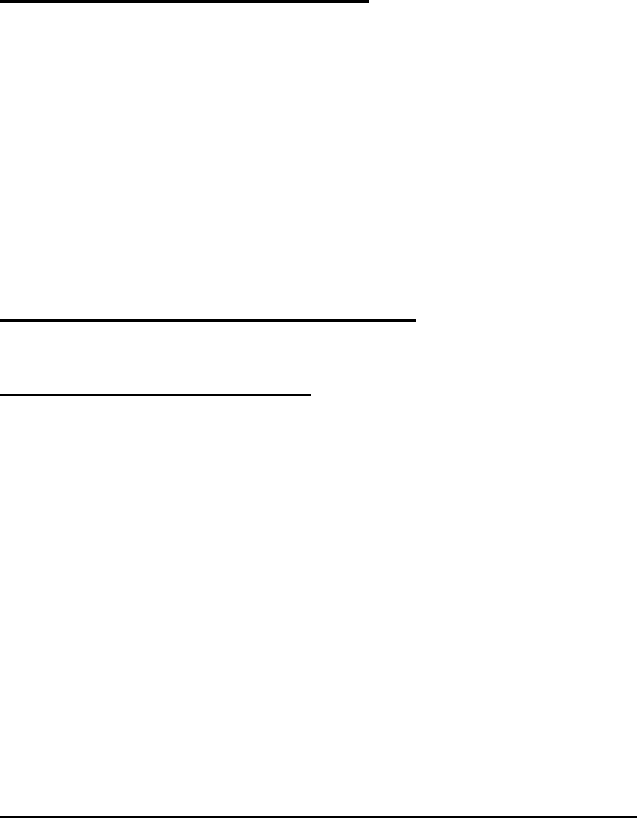
25
frontcourt, only the defense can legally recover the basketball.
ART. 2... While in player and team control in its backcourt, a player shall not cause the ball to go from
backcourt to frontcourt and return to backcourt, without the ball touching a player in the
frontcourt, such that he/she or a teammate is the first to touch it in the backcourt.
ART. 3… During a jump ball, throw-in or while on defense, a player may legally jump from his/her
frontcourt, secure control of the ball with both feet off the floor and return to the floor with one or
both feet in the backcourt. The player may make a normal landing and it makes no difference
whether the first foot down is in frontcourt or backcourt.
SECTION 10 - CLOSELY GUARDED
ART. 1... A player must not while closely guarded:
A. In the team’s frontcourt, hold or dribble the ball for five seconds.
B. In the team’s frontcourt, control the ball for five seconds in an area enclosed by screening
teammates.
ART. 2... A closely guarded count must not be started during an interrupted dribble.
ART. 3... A closely guarded count must be terminated during an interrupted dribble.
PENALTY - (Sections 3 - 10):
The ball is dead when the violation occurs and is awarded to the opponents for a throw-in from the
designated out-of-bounds spot nearest the violation.
SECTION 11 - BASKET INTERFERENCE
A player must not commit basket interference as in Rule 1, Section 5.
SECTION 12 - GOALTENDING
A player must not commit goaltending as in Rule 1, Section 20.
PENALTIES - (Sections 11-12):
1. If the violation is at the opponent's basket, the opponents are awarded one point if during a free throw,
three points if during a three-point try and two points in any other case. The crediting of the score and
subsequent procedure are the same as if the awarded score had resulted from the ball having gone
through the basket, except that the official must hand or bounce the ball to a player of the team entitled
to the throw-in.
2. If the violation is at a team's own basket, no points can be scored, and the ball is awarded to the
opponents for a throw-in from the out-of-bounds spot nearest the violation.
3. If the violation results from touching the ball while it is in the basket after entering from below, no points
are scored and the ball is awarded to the opponents for a throw-in from the designated out-of-bounds
spot nearest the violation.
4. If there is a violation by both teams, play shall be resumed by the team entitled to the alternating-
possession throw-in at the out-of-bounds spot nearest to where the simultaneous violations occurred.
SECTION 13 – EXCESSIVE SWINGING OF ARM(S)/ELBOW(S)
ART. 1... A player must not excessively swing his/her arm(s) or elbow(s), even without contacting an
opponent.
ART. 2... A player may extend arm(s) or elbow(s) to hold the ball under the chin or against the body.
ART. 3... Action of arm(s) and elbow(s) resulting from total body movements as in pivoting or movement
of the ball incidental to feinting with it, releasing it, or moving it to prevent a held ball or loss of
control must not be considered excessive.
PENALTY: The ball is dead when the violation occurs and is awarded to the opponents for a
throw-in from the designated out-of-bounds spot nearest the violation.
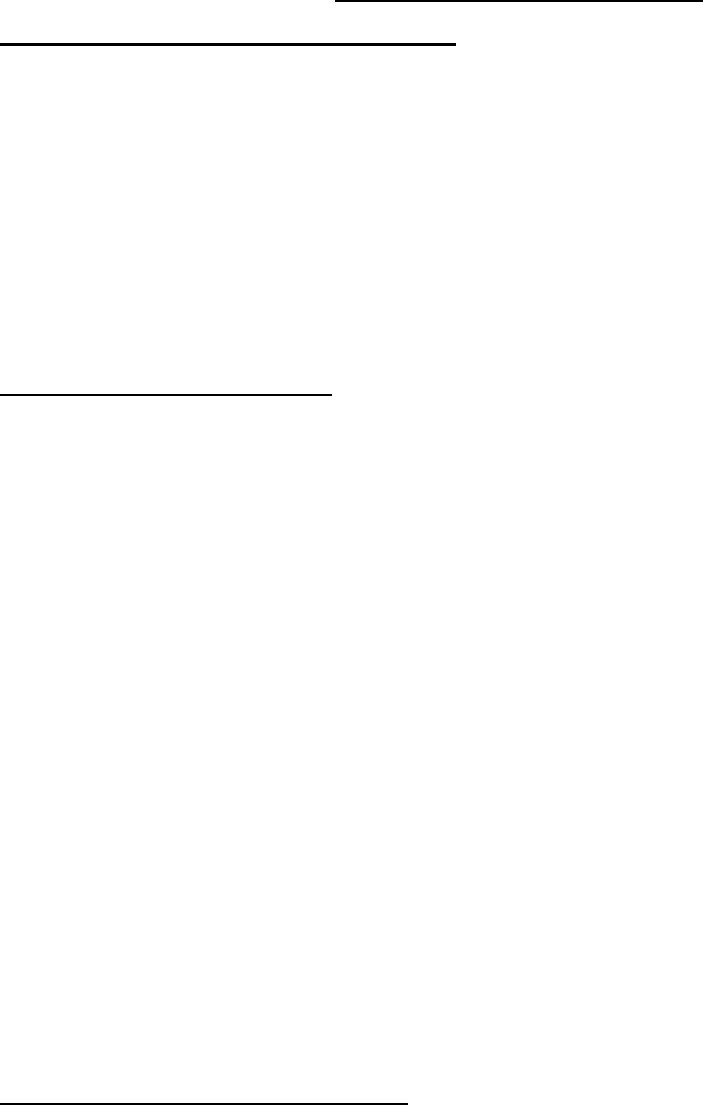
26
RULE #8 - FOULS AND PENALTIES
SECTION 1 - ADMINISTRATIVE TECHNICAL
A team shall not:
ART. 1... Fail to supply the scorekeeper with the name and number of each team member who may
participate and designate the five starting players prior to the start of the scheduled game time.
ART. 2... Use a megaphone or any electronic communication device, or electronic equipment for voice
communication with players on the court or use electronic audio and/or video devices to
request a review of a decision of the contest officials.
ART. 3... Fail to occupy the team member’s bench to which it is assigned.
PENALTY - (Section 1):
Two free throws plus the ball for a division-line throw-in; (Art. 1) One foul for both requirements. Penalized
when it occurs; (Arts. 2 & 3) Penalized when they occur.
SECTION 2 - TEAM TECHNICAL:
ART. 1... Allow the game to develop into an action less contest; this includes the following and similar acts:
A. When the clock is not running consuming a full minute through not being ready when it is
time to start either half.
B. Delay the game by preventing the ball from being made promptly live or from being put in
play. See 5-5-1 and 6-1-2 for the resumption-of-play procedure to use after a time-out or
the intermission between quarters. The procedure is used prior to charging a technical foul
in these specific situations.
C. Commit a violation of the throw-in boundary-line plane after any team warning for delay.
D. Contact with the free thrower or a huddle of two or more players in the lane by either team
prior to a free throw following any team warning for delay.
E. Interfering with the ball following a goal after any team warning for delay.
F. Not having the court ready for play following any time-out after any team warning for delay.
ART. 2... Have more than five team members participating simultaneously.
ART. 3... Request an excess time-out.
ART. 4... Commit an unsporting foul.
ART. 5... Fail to have all players return to the court at approximately the same time following a time-out
or intermission.
ART. 6... Allow players to lock arms or grasp a teammate(s) in an effort to restrict the movement of an
opponent.
PENALTY - (Section 2):
Two free throws plus ball for division line throw-in; (Arts. 1, 4, 5, 6) Penalize when they occur; (Art. 2)
Penalized if discovered while being violated; (Art. 3) Penalized when discovered. Head coach does not
lose the privilege of the coaching box.
SECTION 3 - SUBSTITUTE TECHNICAL:
A substitute shall not enter the court:
ART. 1... Without reporting to the scorer.
ART. 2... Without being beckoned by an official, except between quarters and during time-outs.
PENALTY - (Section 3):
Two free throws plus ball for division line throw-in. One foul for either or both requirements. Penalized if
discovered before the ball becomes live.
NOTE: A single flagrant technical foul or the second technical foul charged to a substitute results in
disqualification of the offender to the team bench.

27
SECTION 4 - PLAYER TECHNICAL:
A player shall not:
ART. 1... Participate after changing his/her number without reporting it to the scorekeeper and an official.
ART. 2... Purposely and/or deceitfully delay returning after legally being out-of-bounds.
ART. 3... Grasp either basket at any time during the game except to prevent injury; dunk or stuff or
attempt to dunk or stuff a dead ball.
ART. 4... Illegally contact the backboard/ring by:
A. Placing a hand on the backboard or ring to gain an advantage.
B. Intentionally slapping or striking the backboard or causing the ring to vibrate while a try or tap
for field goal is in flight or is touching the backboard or is in the basket or in the cylinder above
the basket.
ART. 5... Delay the game by acts such as:
A. Preventing the ball from being made live promptly or from being put in play.
B. Failing when in possession, to immediately pass the ball to the nearer official when a
whistle sounds.
C. The free thrower fails to be in the free-throw semicircle when the official is ready to
administer the free throw unless the resumption-of-play procedure is in effect following a
time-out or intermission.
D. Repeated violations of the throw-in.
ART. 6... Commit an unsporting foul. This includes, but is not limited to, acts or conduct such as:
A. Disrespectfully addressing or contacting an official or gesturing in such a manner as to
indicate resentment.
B. Using profane or inappropriate language or obscene gestures.
C. Baiting or taunting an opponent.
D. Purposely obstructing an opponent’s vision by waving or placing hand(s) near his/her eyes.
NOTE: Purposely diverting an opponent’s attention by waving is different than holding or
waving the hands near the opponent’s eyes for the express purpose of obstructing the
vision so that he/she cannot see.
E. Climbing on or lifting a teammate to secure greater height.
F. Faking being fouled, knowingly attempting a free throw or accepting a foul to which the
player was not entitled.
ART. 7... Intentionally or flagrantly contacting an opponent when the ball is dead and such contact is not
a personal foul.
ART. 8… Be charged with fighting.
ART. 9... Commit goaltending during a free throw.
ART. 10... Reach through the throw-in boundary-line plane and touch or dislodge the ball.
PENALTY - (Section 4):
Two free throws plus ball for division line throw-in; (Art. 1) Flagrant foul. Penalized if discovered while
being violated; (Art. 8) Flagrant foul.
NOTE: A single flagrant technical foul or the second technical foul charged to a player results in
disqualification of the offender to the team bench.
SECTION 5 - BENCH TECHNICAL:
The head coach is responsible for his/her own conduct and behavior, as well as players, substitutes,
disqualified team members and all other bench personnel. The conduct and behavior of team parents
and spectators is also the responsibility of the head coach.
Bench Personnel, including the head coach, shall not:
ART. 1... Commit an unsporting foul. This includes, but is not limited to, acts or conduct such as:

28
A. Disrespectfully addressing an official.
B. Attempting to influence an official's decision.
C. Using profane or inappropriate language or obscene gestures.
D. Disrespectfully addressing, baiting or taunting an opponent.
E. Objecting to an official's decision by rising from the bench or using gestures.
F. Inciting undesirable crowd reactions.
G. Being charged with fighting.
H. Grasping either basket except to prevent injury, dunking or attempting to dunk or stuff a
dead ball.
ART. 2... Enter the court unless by permission of an official to attend an injured player.
ART. 3... Stand at the team bench while the clock is running or is stopped, and shall remain seated,
except:
A. The head coach as in 8-6-1.
B. When a team member is reporting to the scorer’s table.
C. During a charged time-out, or the intermission between quarters and extra periods.
D. To spontaneously react to an outstanding play by a team member or to acknowledge a
replaced player(s) but must immediately return to his/her seat.
PENALTIES - (Articles 1A, B, D, E, F, 2, 3): The officials may warn the head coach unless the offense is
judged to be major, in which case a technical foul shall be ruled. (Articles 1-3): Two free throws plus ball
for division-line throw-in. If the head coach is the offender, the foul is charged directly to him/her. The foul
is charged to the offender (if not the head coach) and also charged indirectly to the head coach. (Art. 1G)
Flagrant foul, the offender is disqualified. If the offender is bench personnel, each foul is also charged
indirectly to the head coach. A disqualified player shall remain seated on his/her team bench at all times,
until the conclusion of the game. Failure to comply with the rules of ejection may result in the game
being forfeited.
ART. 4... Leave the confines of the bench during a fight or when a fight may occur. The head coach may
enter the court in order to prevent the situation from escalating.
PENALTY - Flagrant foul, disqualification of individual offender, but only one technical-foul
penalty is administered regardless of the number of offenders. This one foul is
also charged indirectly to the head coach. If the head coach is an offender, an
additional flagrant technical foul is charged directly to the coach and penalized.
When a simultaneous technical foul(s) by opponents occurs, the free throws are
not awarded when the penalties offset.
NOTE 1: A single flagrant foul or the second technical foul charged to any bench personnel, other than
the head coach, results in disqualification of the offender. A single flagrant foul, the second direct
technical foul or the third technical (any combination of direct or indirect) charged to the head
coach results in disqualification and ejection. Ejected adult bench personnel must leave the
vicinity (out of sight and sound) of the playing area immediately and are prohibited from any
further contact (direct or indirect) with the team during the remainder of the game. Failure to
comply with the rules of ejection may result in the game being forfeited.
NOTE 2: If there is a third direct technical foul on any other coach on the same team, the game may be
forfeited if there are no adult personnel to take over the team.
SECTION 6 – HEAD COACHES’ RULE
ART. 1... Only the head coach may stand within the confines of the designated coaching box. The
first technical foul charged directly or indirectly to the head coach will result in the loss of
coaching box privileges and the head coach shall remain seated for the remainder of the game,
except as stated below:
A. The head coach may stand within the coaching box and give instructions to his/her players
and/or substitutes.
B. The head coach may rise in front of his/her seat to spontaneously react to an outstanding
play by a team member but must immediately return to their seat.

29
C. The head coach may stand within the coaching box and request a time-out or signal his/her
players to request a time-out.
D. The head coach may stand and/or leave the coaching box to confer with personnel at the
scorers’ table to request a time-out.
E. The head coach may stand within the coaching box to replace or remove a disqualified/
injured player or player directed to leave the game.
ART. 2... The head coach shall replace or remove a disqualified/injured player or player directed to leave
the game, within twenty seconds when a substitute is available.
ART. 3… The head coach shall not permit a team member to participate after being removed from the
game for disqualification.
ART. 4... Assistant coaches shall remain seated on the team bench for the duration of the game,
whether the clock is running or is stopped, except:
A. When a time-out has been called.
B. When attending to an injured player after being beckoned onto the court by an official.
C. Rise in front of their seat to spontaneously react to an outstanding play by a team member
but must immediately return to their seat.
NOTE: The rules that permit a head coach to rise in certain situations (time-outs, confer
with scorekeeper, dealing with disqualifications) do not apply to assistant
coaches under any circumstances.
PENALTY – (Section 6):
Two free throws, plus ball for division-line throw-in. The foul is charged directly to the head coach. (Art. 1):
The official shall warn the head coach unless the offense is judged to be major, in which case a technical
foul shall be ruled. (Art. 3) Penalized if discovered while being violated. (Art. 4) The foul is charged to the
offender and also charged indirectly to the head coach.
NOTE 1: A single flagrant foul, the second direct technical foul or the third technical (any combination of
direct or indirect) charged to the head coach results in disqualification and ejection. Ejected
adult bench personnel shall leave the vicinity (out of sight and sound) of the playing area
immediately and are prohibited from any further contact (direct or indirect) with the team during
the remainder of the game. Failure to comply with the rules of ejection may result in the
game being forfeited.
NOTE 2: If there is a third technical foul on any other coach on the same team, the game may be
forfeited if there is no adult personnel available to take over the team.
SECTION 7 - CONTACT
ART. 1... A player shall not hold, push, charge, trip or impede the progress of an opponent by extending
arm(s), shoulder(s), hip(s), or knee(s), or by bending the body into other than a normal position;
nor use any rough tactics. A player shall not contact an opponent with the hand unless such
contact is only with the opponent's hand while it is on the ball and is incidental to an attempt to
play the ball. A player shall not use the hands on an opponent in any way that inhibits the
freedom of movement of the opponent or acts as an aid to a player in starting or stopping. A
player shall not extend the arm(s) fully or partially other than vertically so that freedom of
movement of an opponent is hindered when contact with the arms occurs. A player may hold
the hand(s) and arm(s) in front of the player’s own face or body for protection and to absorb
force from an imminent charge by an opponent. A player shall not use the forearm and/or hand
to prevent an opponent from attacking the ball during a dribble or when throwing for goal.
Contact caused by a defensive player who approaches from behind is pushing; contact caused
by the momentum of a player who has thrown for a goal is charging.
ART. 2... A player shall neither charge into nor contact an opponent in the dribbler’s path nor attempt to
dribble between two opponents or between an opponent and a boundary, unless the space is
such as to provide a reasonable chance for him/her to go through without contact. When a
dribbler, without contact, sufficiently passes an opponent to have head and shoulders in
advance of that opponent, the greater responsibility for subsequent contact is on the opponent.

30
When a dribbler is moving in a straight-line path, the dribbler may not be crowded out of that
path, but if an opponent is able to legally obtain a defensive position in that path, the dribbler
must avoid contact by changing direction or ending his or her dribble.
ART. 3... The dribbler is not permitted additional rights in executing a jump try for goal, pivoting, feinting
or in starting a dribble.
ART. 4... A player shall adhere to the rules pertaining to illegal contact, including but not limited to,
guarding, rebounding, screening and verticality.
ART. 5... The following acts constitute a foul when committed against a ball handler/dribbler. A player
becomes a ball handler when he/she receives the ball. This would include a player in a post
position.
A. Placing two hands on the player.
B. Placing an extended arm bar on the player.
C. Placing and keeping a hand on the player.
D. Contacting the player more than once with the same hand or alternating hands.
PENALTY - (Section 7)
Offender is charged with one foul, and if it is his/her 5th foul (personal and technical) or if it is flagrant,
he/she is disqualified.
PENALTIES (Rule 8 Summary)
1. No free throws:
A. For each common foul before the bonus rule is in effect.
B. For a player-control or team-control foul.
C. For double personal or technical fouls (point of interruption).
D. For simultaneous personal or technical fouls by opponents (point of interruption).
E. After time has expired for the fourth quarter (or extra period), unless the point(s) would affect
the outcome of the game.
NOTE: If one or both fouls of a double foul are flagrant, no free throws are awarded. Any
player who commits a flagrant foul is disqualified.
2. One free throw if fouled in the act of shooting and two-point or three-point try or tap is successful.
3. Bonus Free throw:
A. For seventh, eighth and ninth team foul each half, if first free throw is successful.
B. Beginning with tenth team foul each half whether or not first free throw is successful.
4. Two free throws if intentional or flagrant, plus ball for throw-in.
5. Fouled in act of shooting and try or tap is unsuccessful:
A. Two free throws on two-point try or tap.
B. Three free throws on three-point try or tap.
Plus ball for throw-in if intentional or flagrant.
6. Multiple Foul:
A. One free throw for each foul:
1. No try involved.
2. Successful or unsuccessful two-point try or tap.
3. Successful three-point try or tap.
B. Two free throws for each foul:
1. Intentional or flagrant foul.
2. Unsuccessful three-point try or tap.
Plus ball for throw-in if intentional or flagrant.
NOTE: If one or both fouls of a multiple foul are flagrant, two free throws are awarded for each
flagrant foul. Any player who commits a flagrant foul is disqualified.
7. In case of a false double foul or false multiple foul, each foul carries its own penalty.
NOTE: All fouls (except an indirect technical foul charged to the head coach) count toward the
team’s foul count in the half.
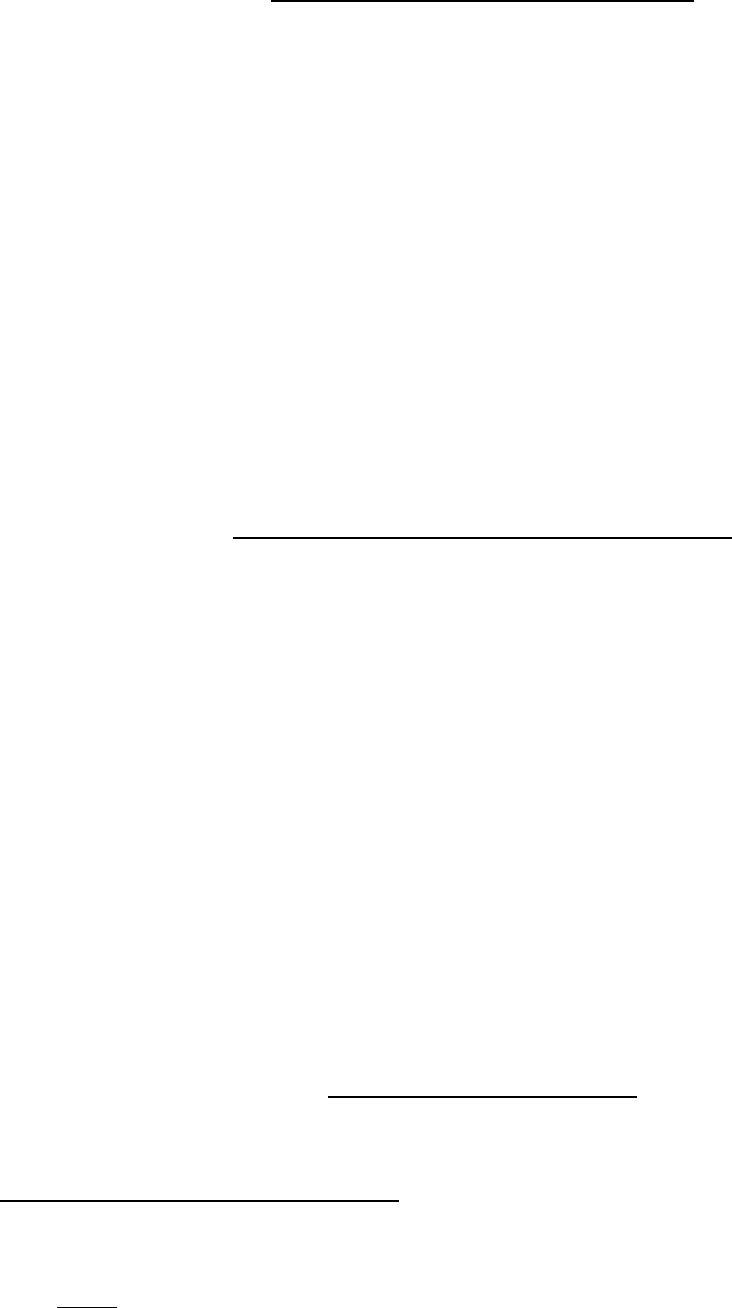
31
RULE #9 - SPECIAL 1A DIVISION RULES
ART. 1... There shall be no backcourt guarding in the 1A division. When a team secures possession in
its backcourt, the defensive team must immediately drop back across their center restraining line.
ART. 2... The offensive team shall be allowed to dribble across the center court line before being
guarded. However, passes crossing the center line shall be in play for both teams.
EXCEPTION: After the two-minute warning has been given in the 4th quarter, any legal
defense, including a full court press, may be used provided the difference in
the score is ten points or less.
ART. 3... The free throw line for the 1A division shall be twelve feet from the face of the backboard.
ART. 4... Teams will be allowed to remain in the key for five seconds before being penalized.
ART. 5... During a free throw, four defensive and two offensive players (does not include the shooter) will
occupy the marked lane spaces.
PENALTY - (Articles 1-4):
(Art. 1) After one warning, a one shot technical foul is awarded to the offended team. The foul
is assessed as a team foul. (Art. 4) The ball is awarded out-of-bounds to the offended team for
a throw-in.
CITY PLAY-OFFS AND CHAMPIONSHIP GAMES
A. The City Championship Tournament will be conducted the week following the end of regular season
league play.
B. The same rules and regulations, which governed league play, shall govern the City Play-offs and
Championship games.
C. To be eligible for playoffs a player must have participated in at least one regular season game.
D. A paid scorekeeper will be the official scorekeeper.
E. Protests during City Play-offs or Championship games will be rendered on site by the Center
Supervisor or Youth Sports Coordinator. In the absence of both, the highest ranking staff member
present will handle all protests. The protest must be made verbally to the referee, stating the Rule #,
Section and/or Article that governs the rule interpretation in question, at the time it occurs.
F. The use of video or other electronic devices will not be allowed as evidence in a protest, nor shall it be
used by a sports official in an attempt to render a decision.
G. In the event a player is discovered during the City Play-offs to be ineligible, the opposing team playing,
or the last team to have played the offending team, will advance to the next round of the Play-offs, or
be awarded the City Championship by forfeit (if the ineligible player is discovered during or following
the final City Championship game).
CLINIC BASKETBALL RULES
The following rules have been adopted for the 2024 Clinic Basketball Season. With the exception of the
following rules, the 2024 Youth Basketball Rulebook shall govern all other play.
1. COURT REQUIREMENTS/EQUIPMENT
A. The rim shall be set at 8½ feet from the floor. (When adjustable backboards are available)
B. The free throw shooting line will be eight feet from the face of the backboard.
C. During a free throw no players will be allowed to occupy the marked lane spaces.
D. A rookie-sized basketball will be used for all games.
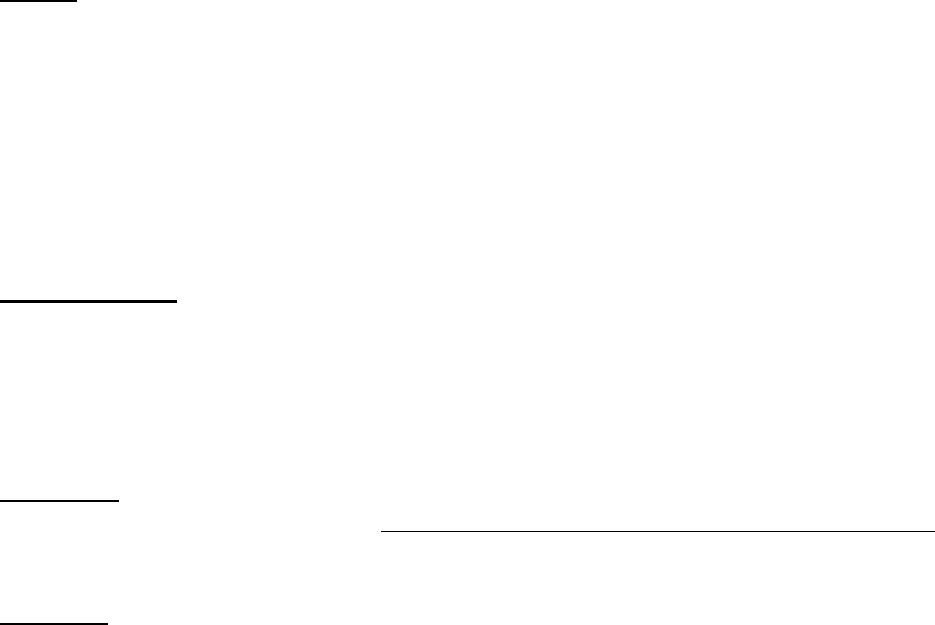
32
2. TIMING
A. A regulation game shall be four eight-minute quarters in length.
B. The game will be administered with a running clock. The clock will run continuously, except for
time-outs and emergencies.
C. There will be a one-minute rest period between each quarter.
D. There will be a two-minute half-time rest period between the second and third quarters.
E. Each team is entitled to one time-out per half (not to exceed one minute in length).
F. Late-running games can be ended early at the discretion of either the head referee or the staff
member in charge of gym supervision. A quarter(s) may be shortened in an emergency or at any
time at the direction of the Youth Sports Coordinator, supervising gym staff or by mutual
agreement of the opposing coaches and the referee.
3. SUBSTITUTIONS
A. Each team member in good standing must play a minimum of two complete quarters (from the
beginning of the quarter to the end of the quarter).
B. It is up to the Coach to ensure that each child, present at a game, receives his or her minimum
playing time.
C. A team member not present at the start of the game may enter the game at any time provided the
coach has notified the scorekeeper.
4. PROTESTS
A. The judgment of the official is final. No protests involving a rule interpretation will be allowed.
B. Only player eligibility protests will be heard. If a player or players have been found to be ineligible
said player(s) will be removed from the team.
5. GENERAL
A. Only one coach per team will be allowed on the court during play, provided either the
assistant coach or a team parent remains on the bench with any players not currently in the
game. It is the coaches’ responsibility to ensure that his/her presence on the court does not
hinder an official’s ability to call the game.
B. Backcourt guarding is not permitted. If a violation occurs, the official will stop play, make the
defensive team go into the frontcourt, beyond the 3-point line, and then award the ball to the
offensive team at the spot play was stopped.
C. A full court press will not be allowed at any time.
D. As in all clinic division sports in the City of Carson, this is a fundamental league. NO SCORES
WILL BE KEPT. EVERYONE IS A WINNER! This league is designed to encourage and teach
development and good sportsmanship. Coaches and Parents shall at all times, set good examples
for their children.
NOTE: Referee’s, like coaches, are there to help players learn the fundamentals of the game. Calling
every foul that they see arise not only slows down the pace of the game, but sometimes
takes all the fun out. When a foul arises, referees will use their own judgment as to
whether a foul needs to be strictly enforced, or perhaps a warning would be sufficient.
All contact fouls should still be called at all times. Referees should also take the time to
explain a foul or penalty to a player and/or coach.
